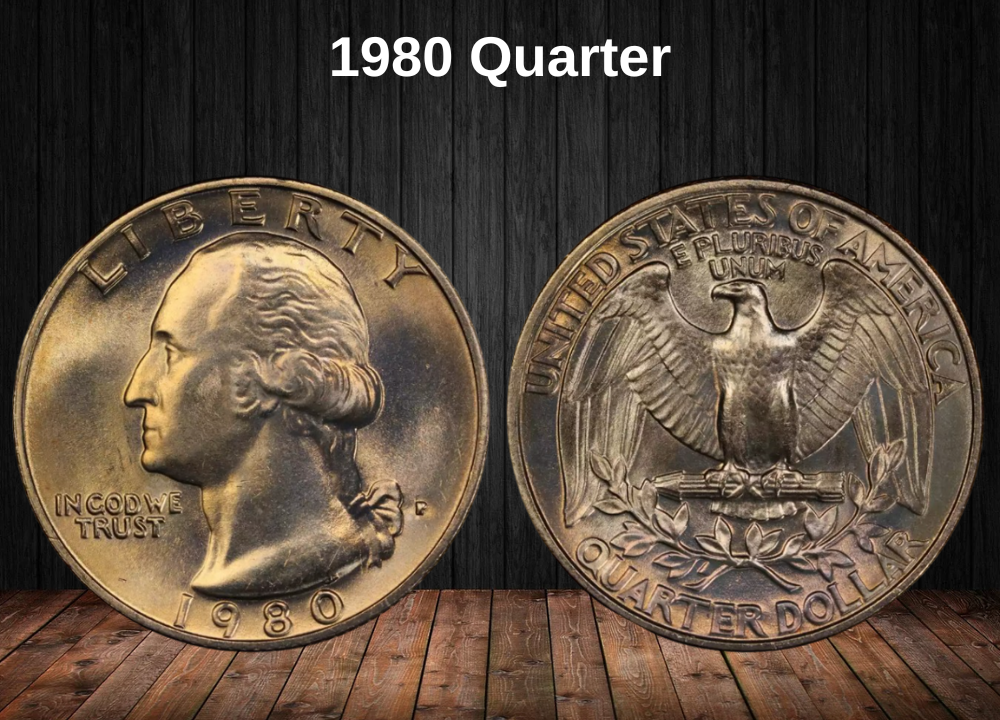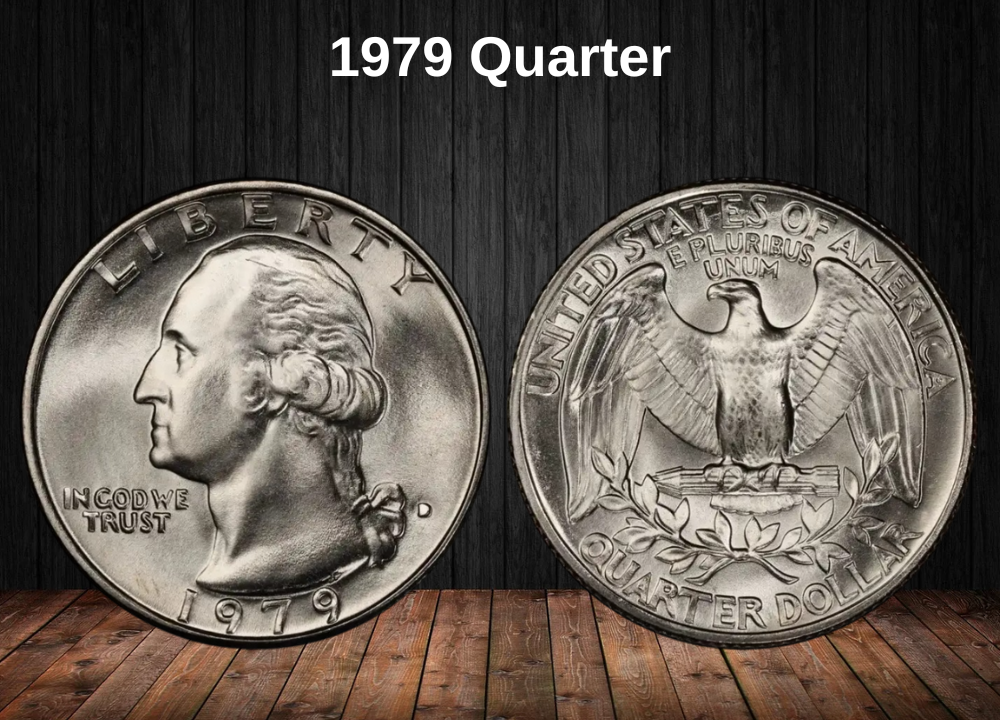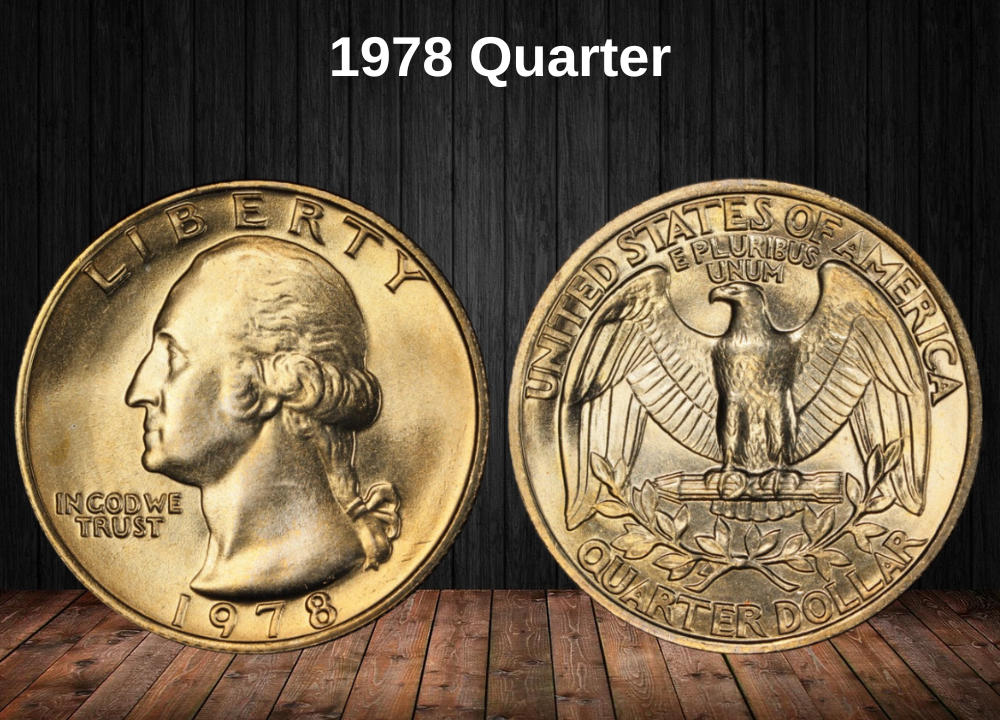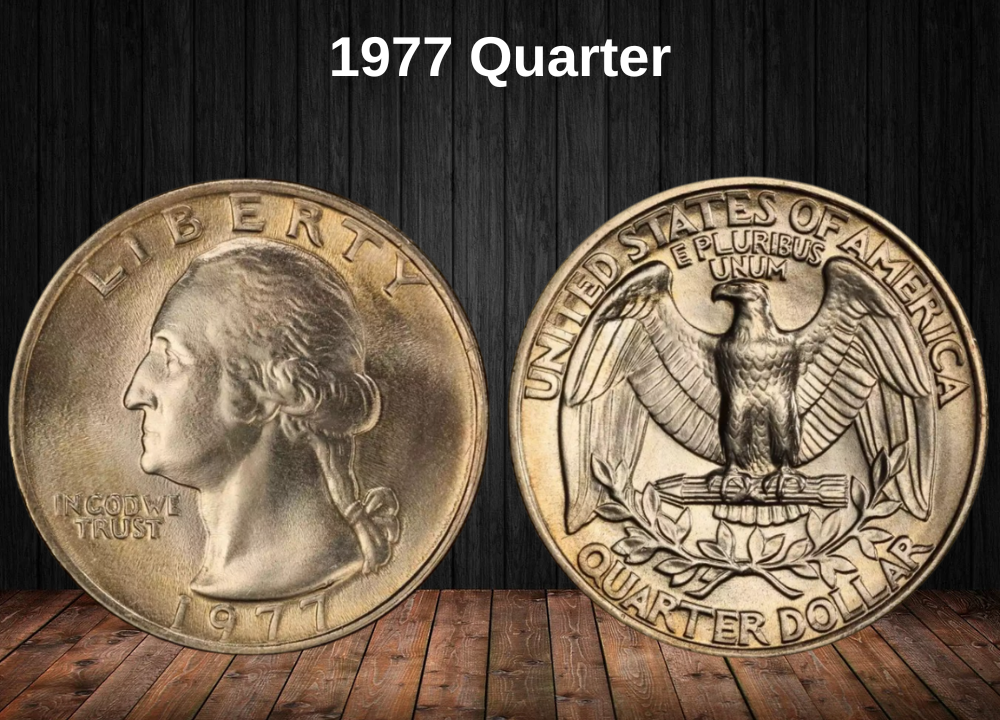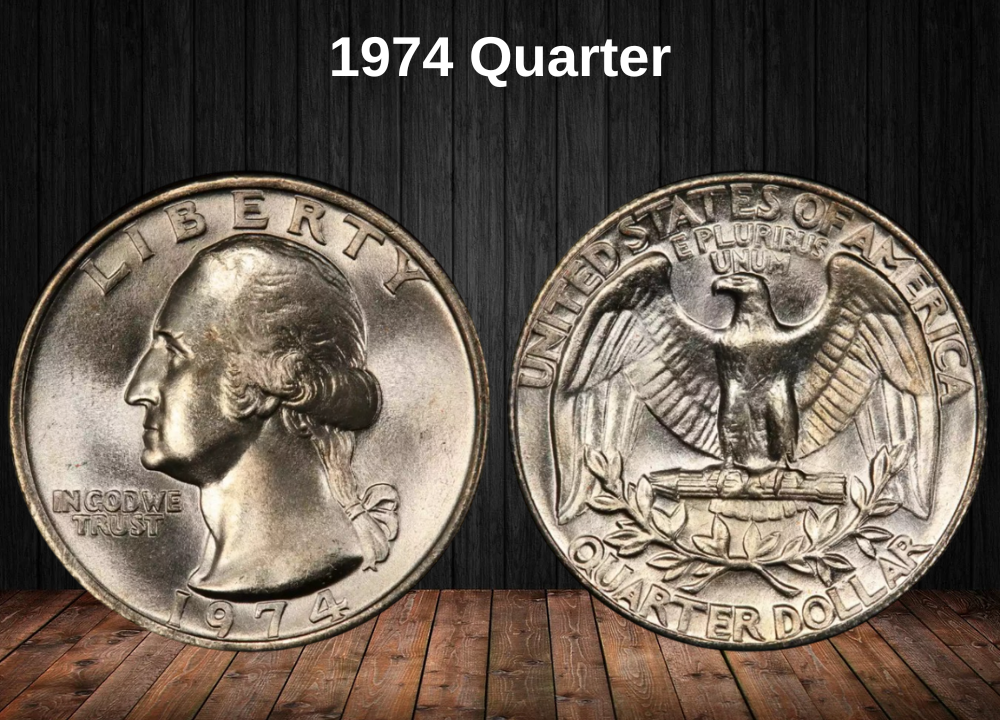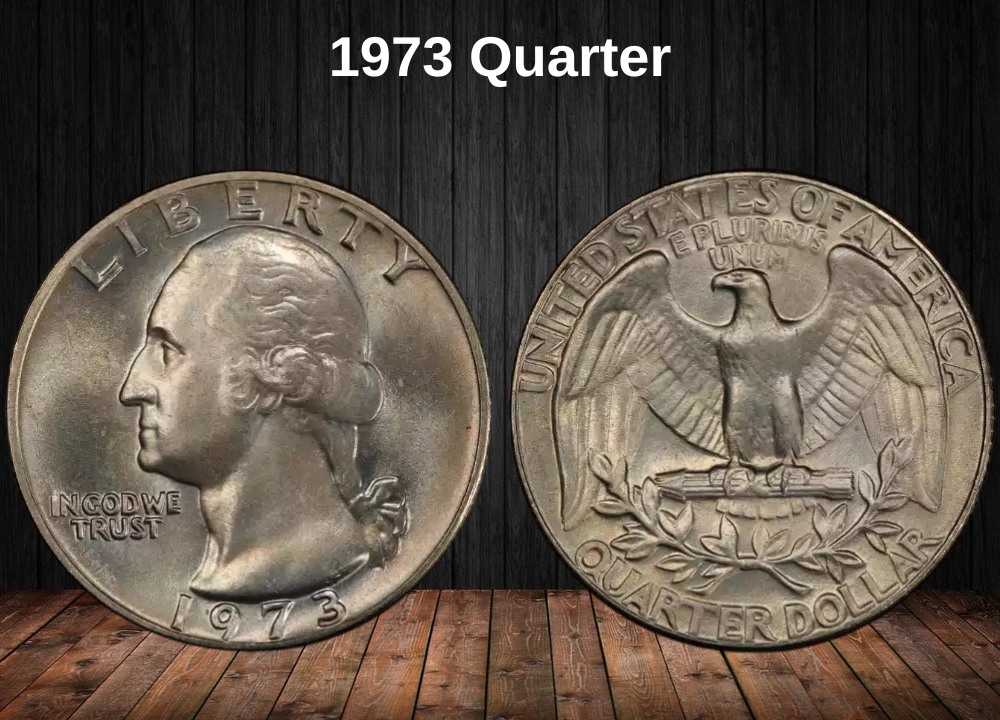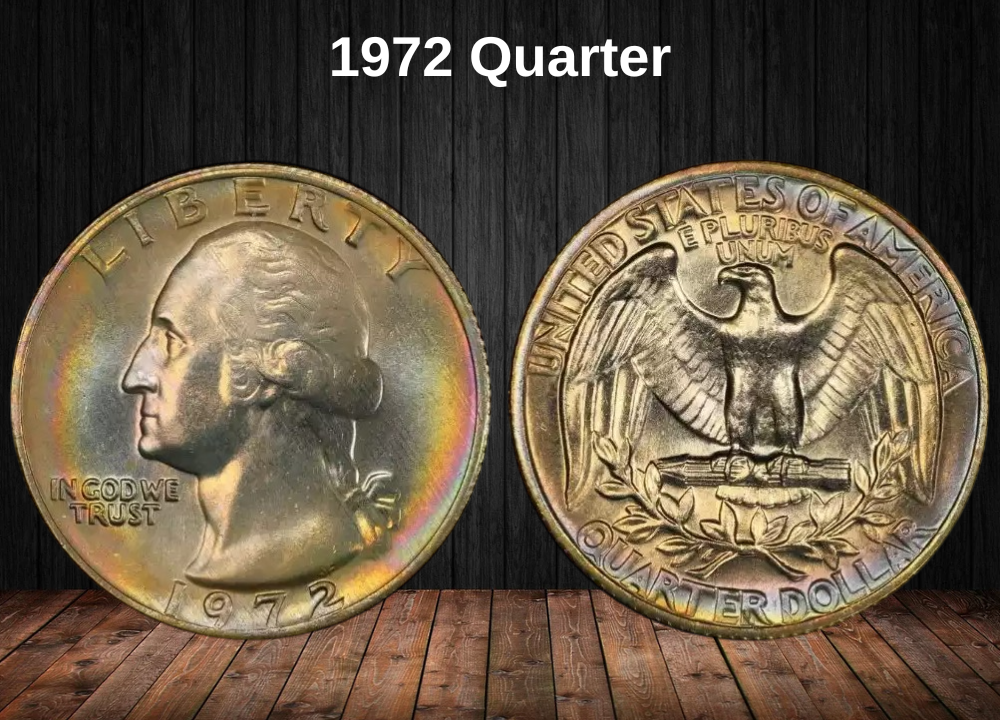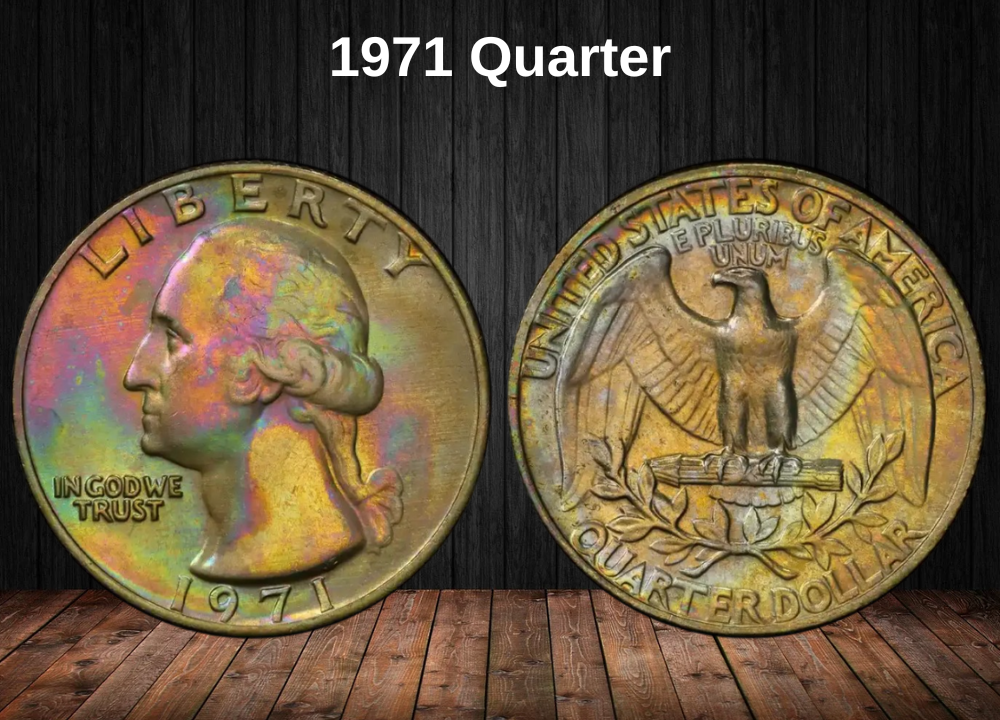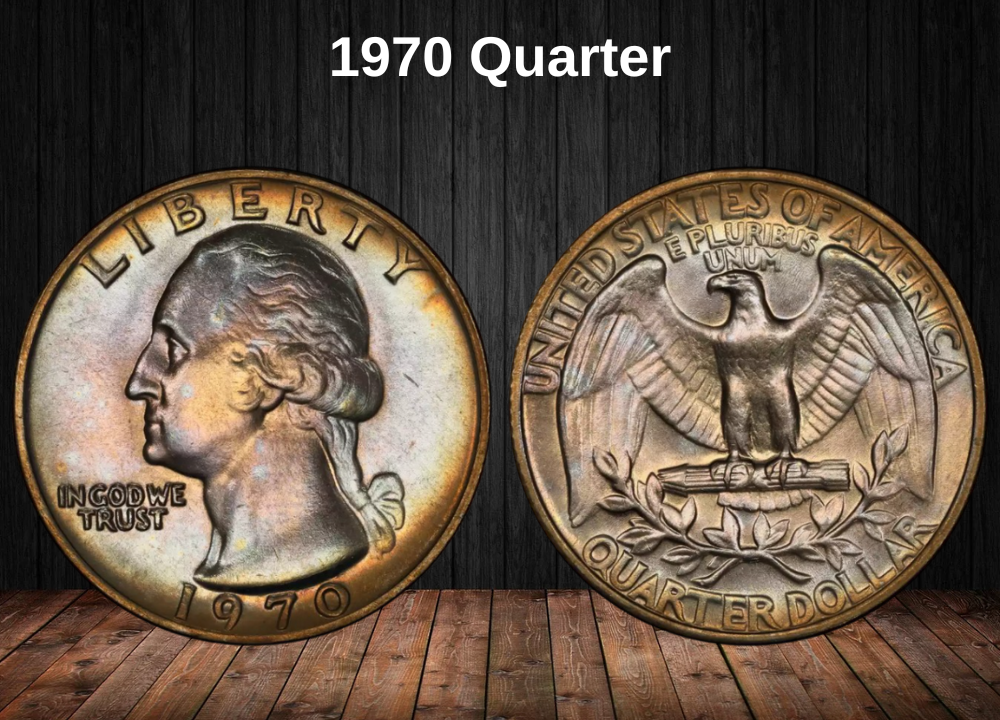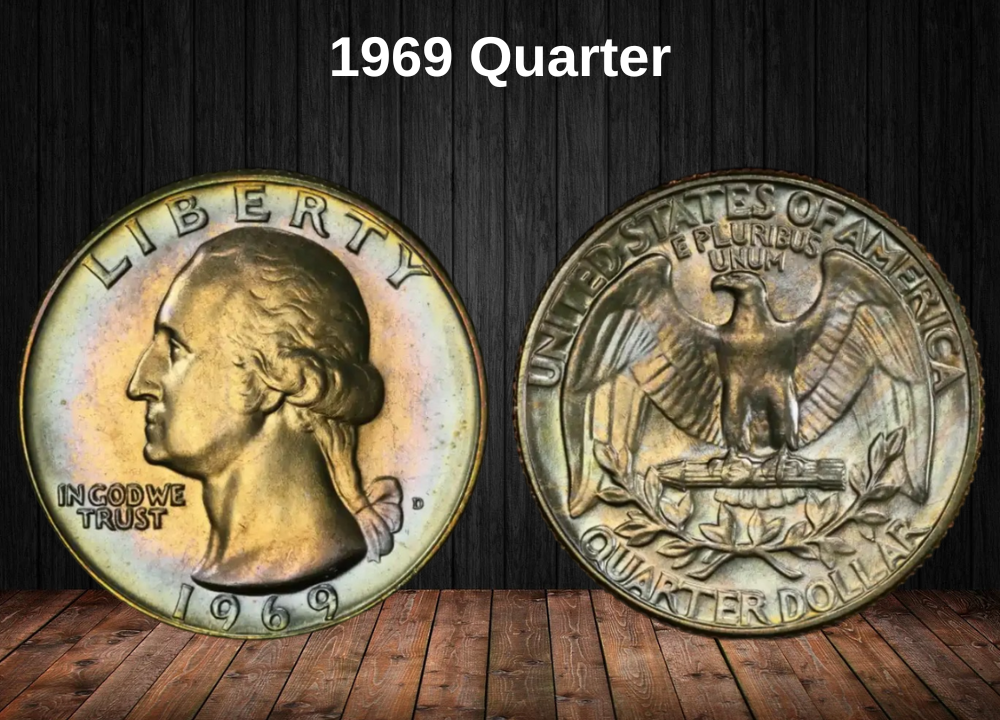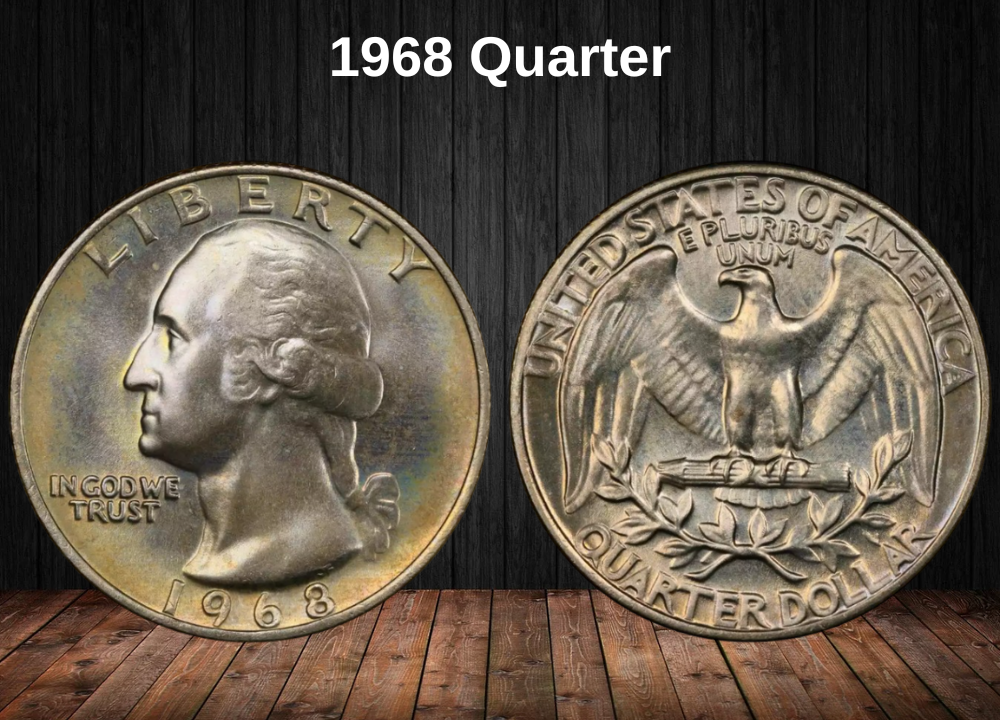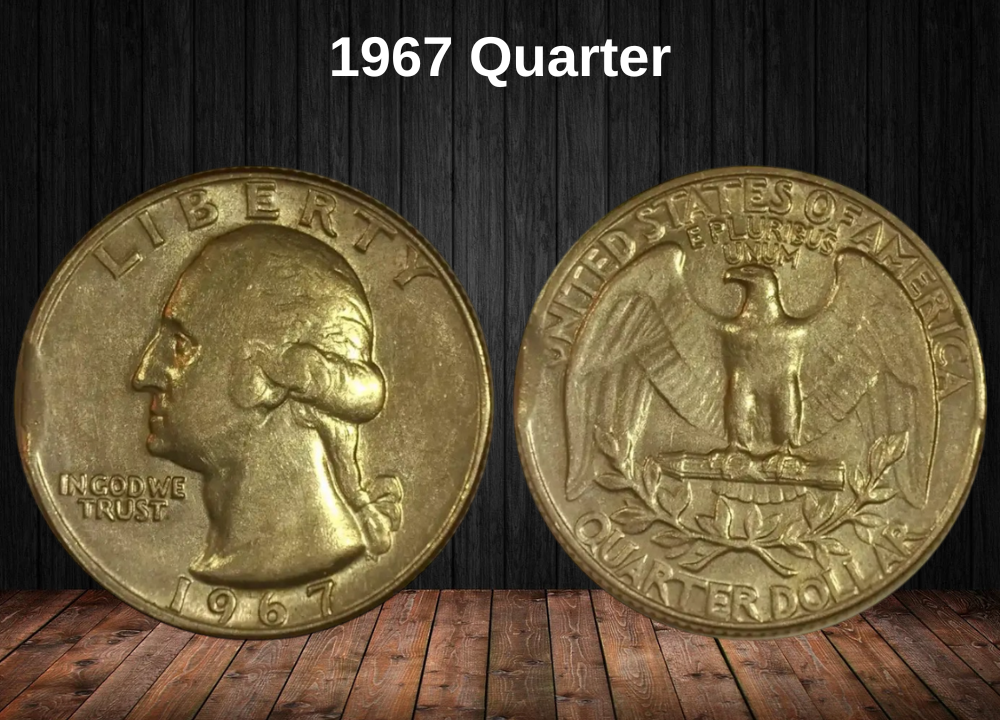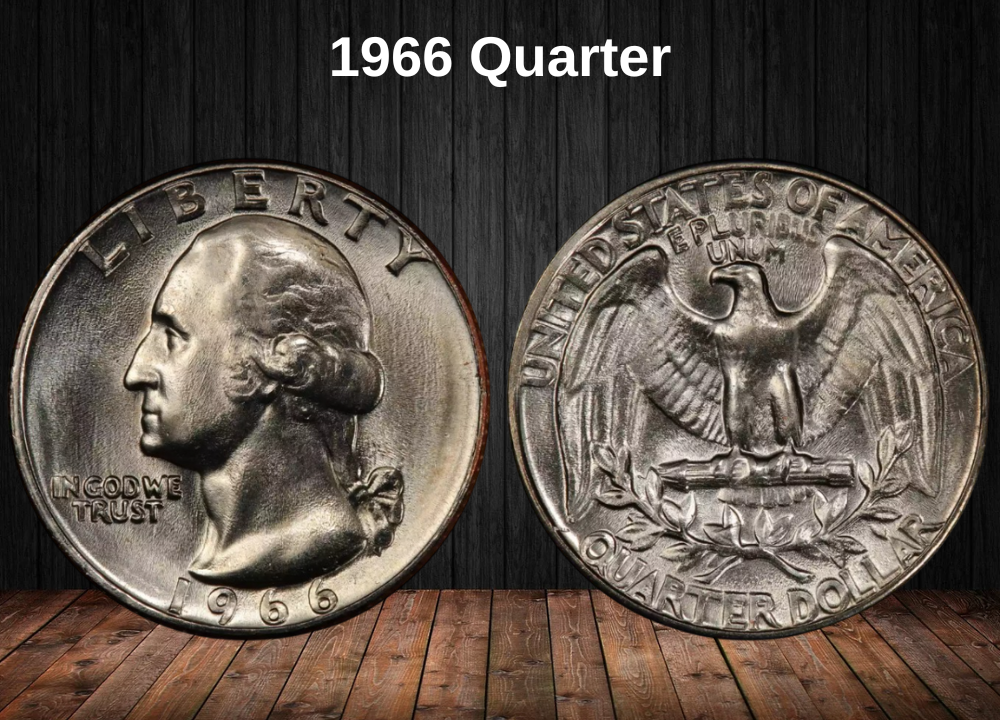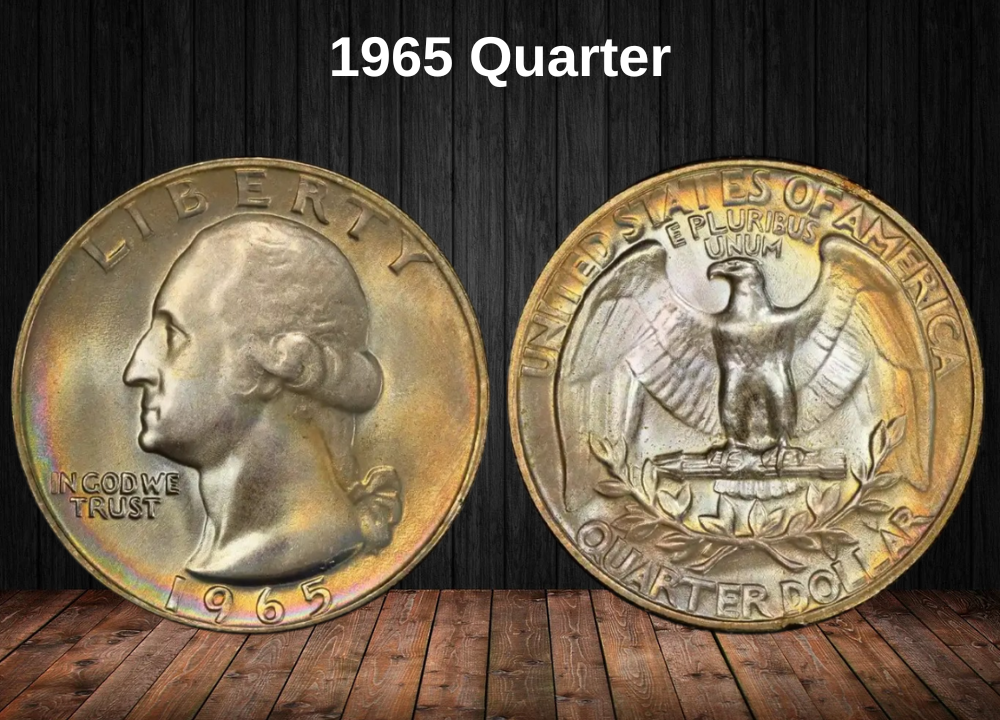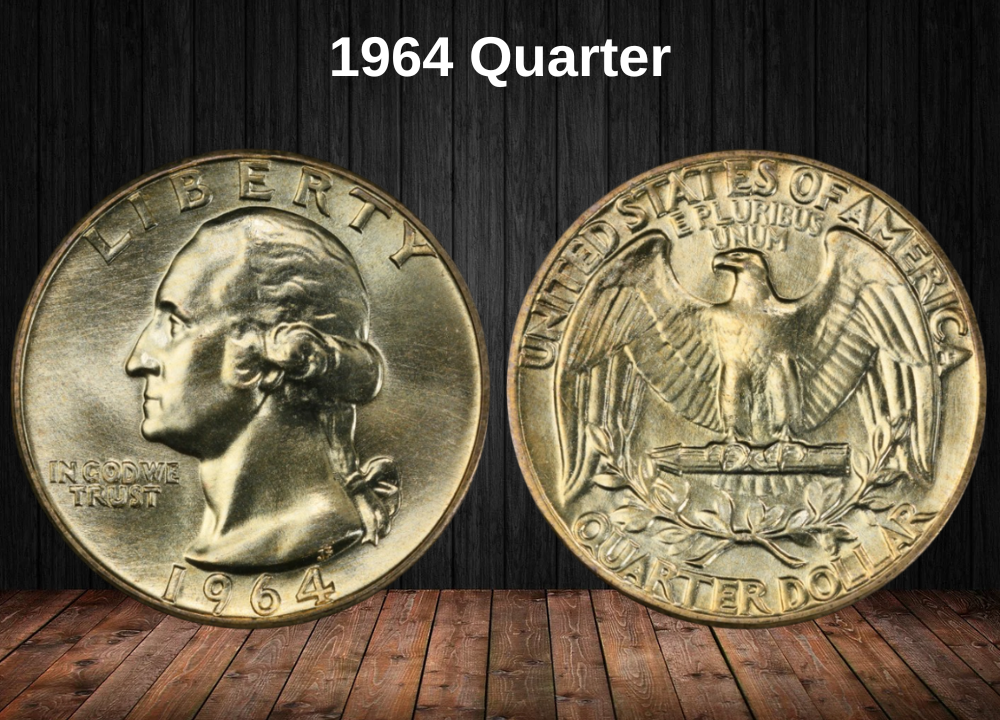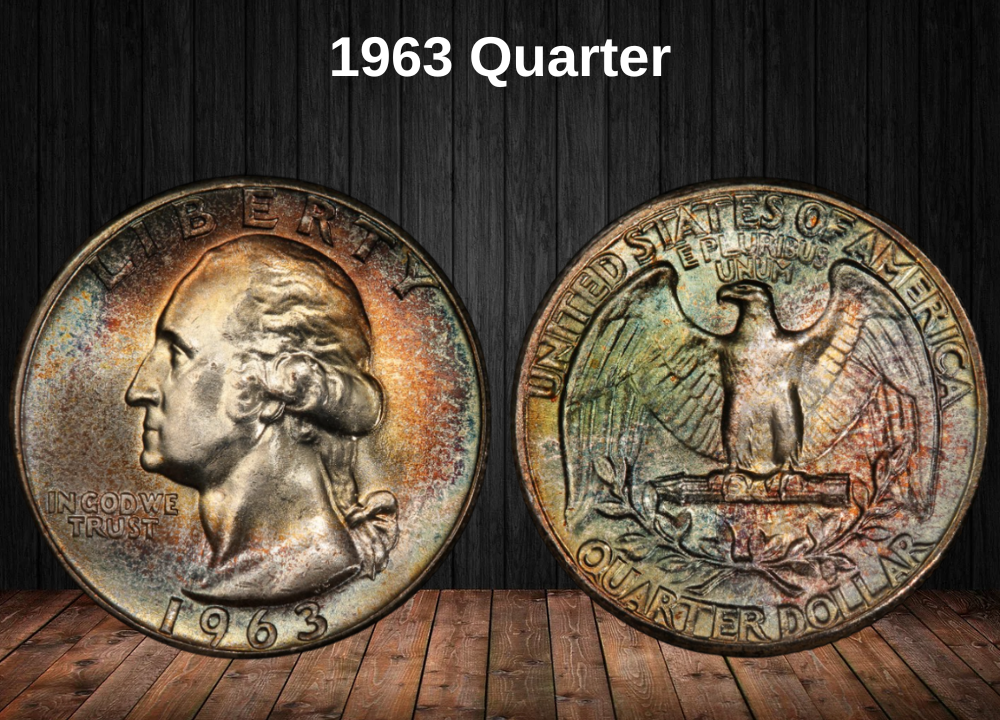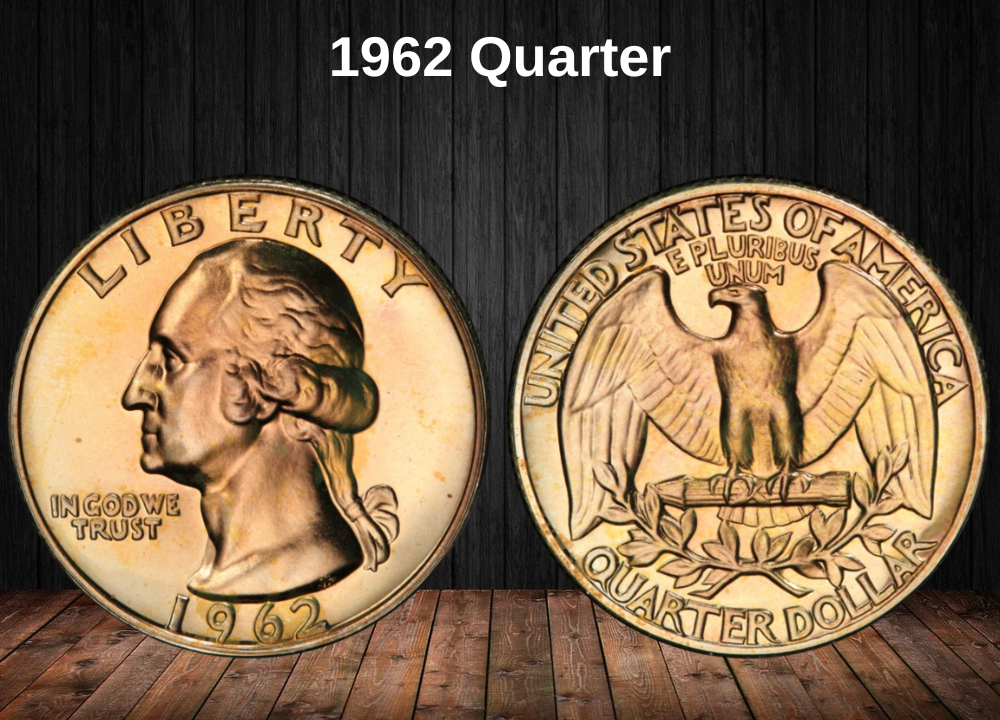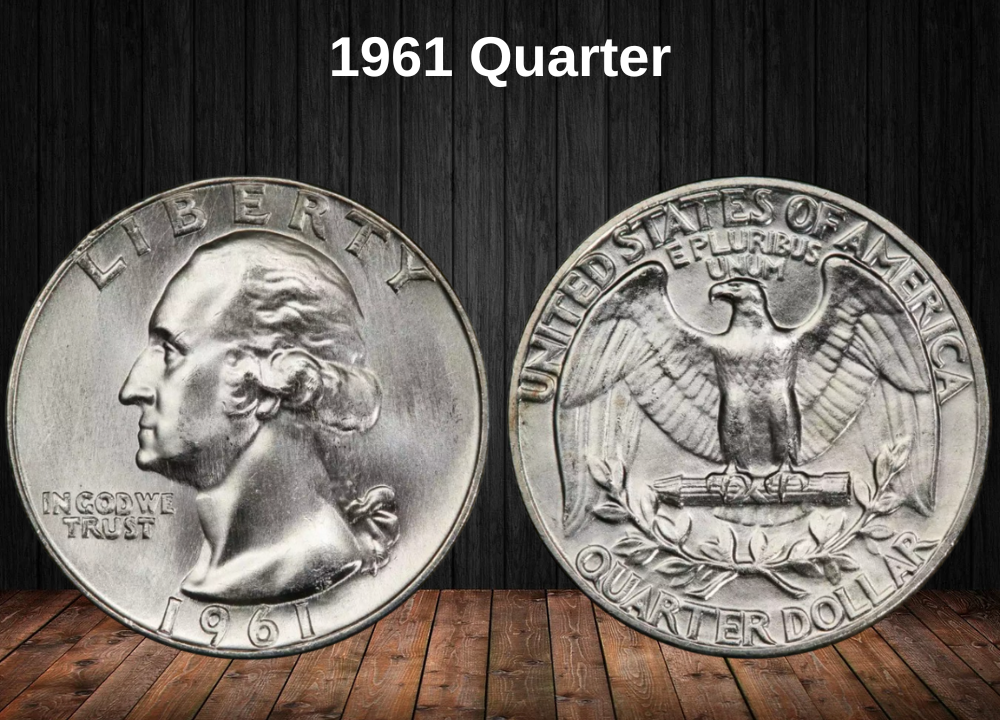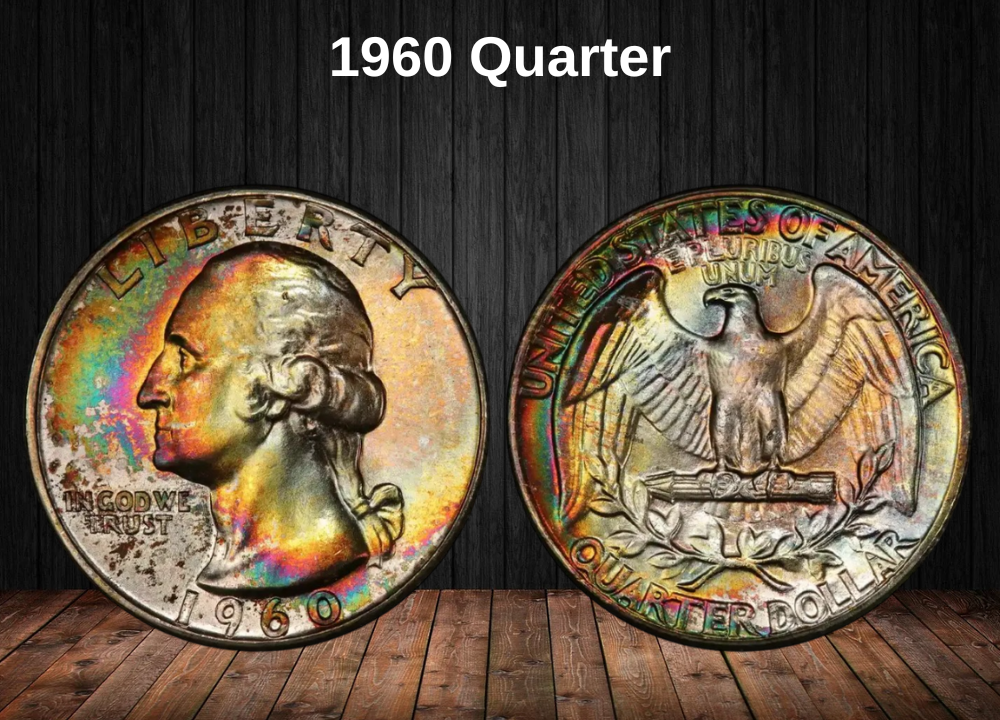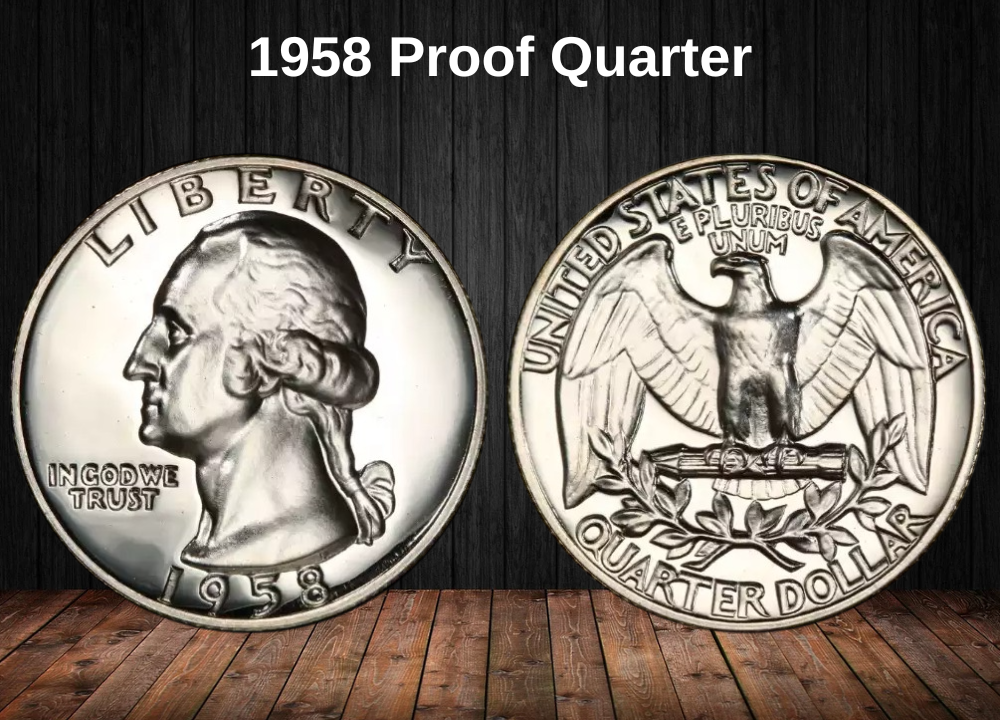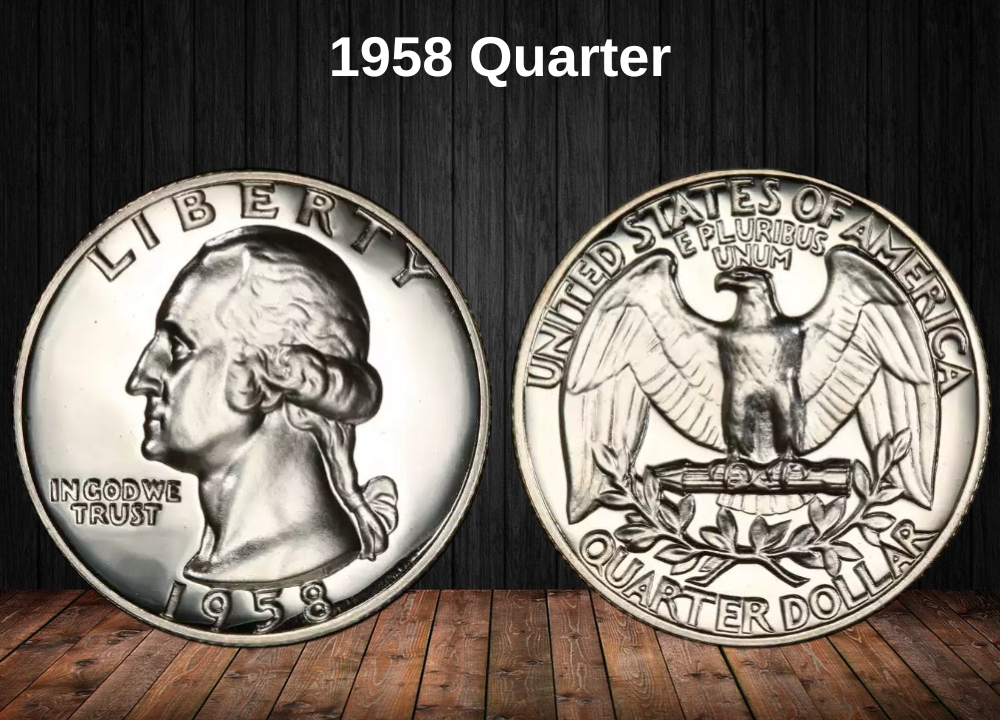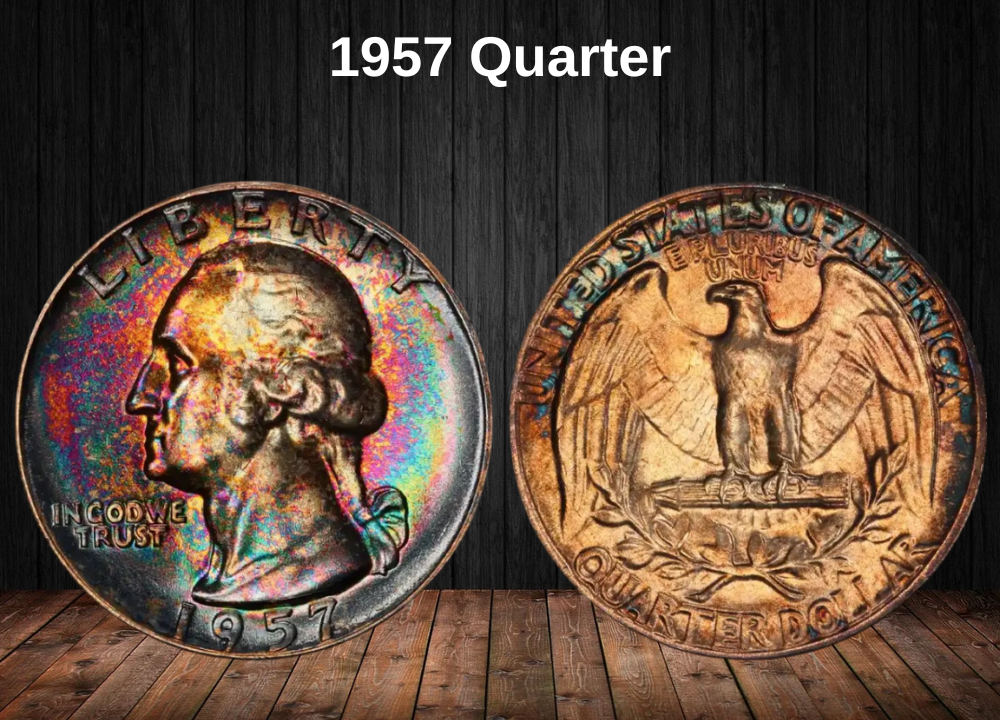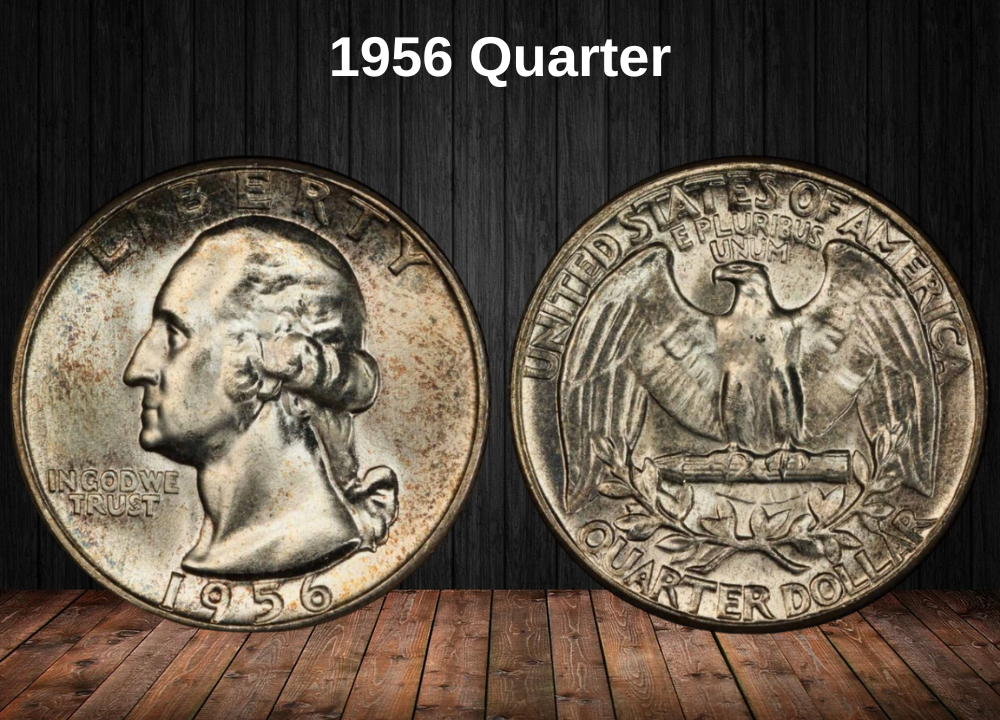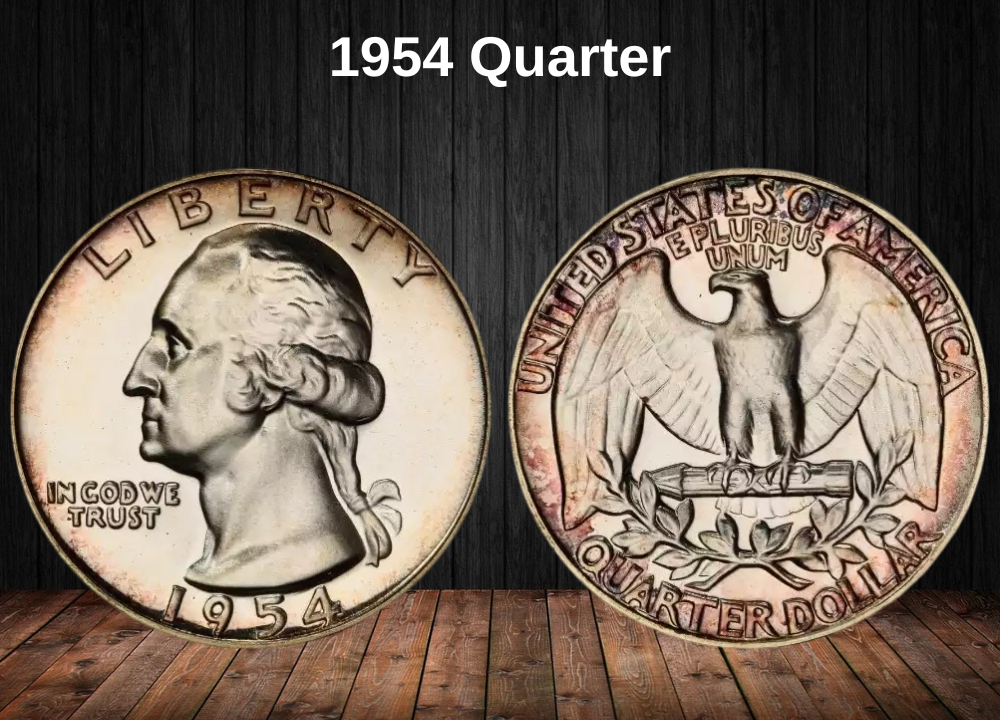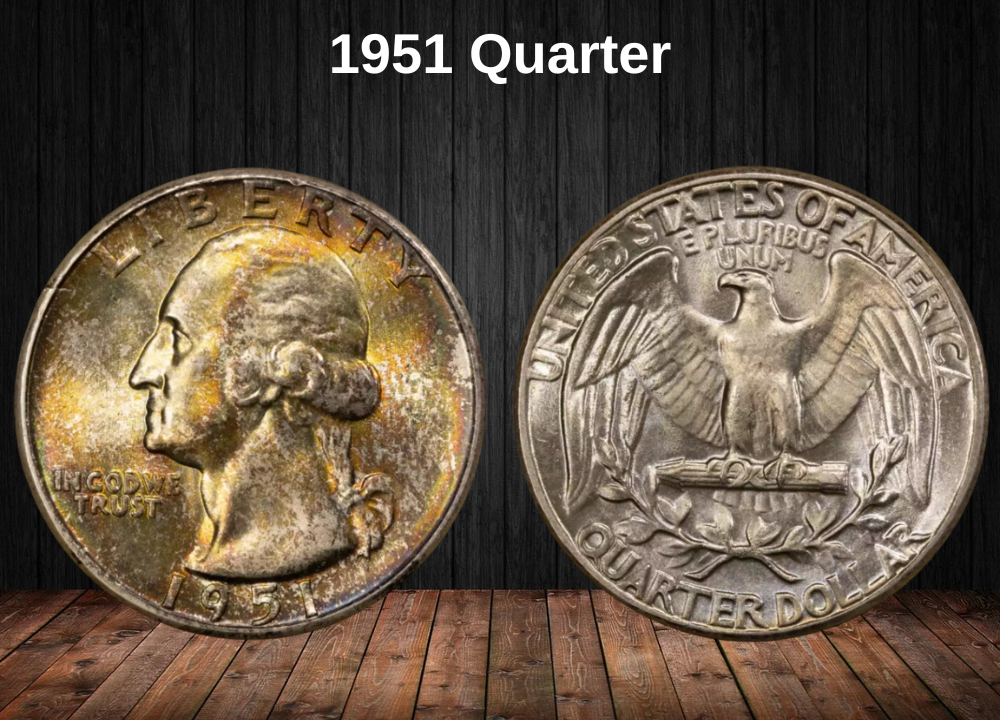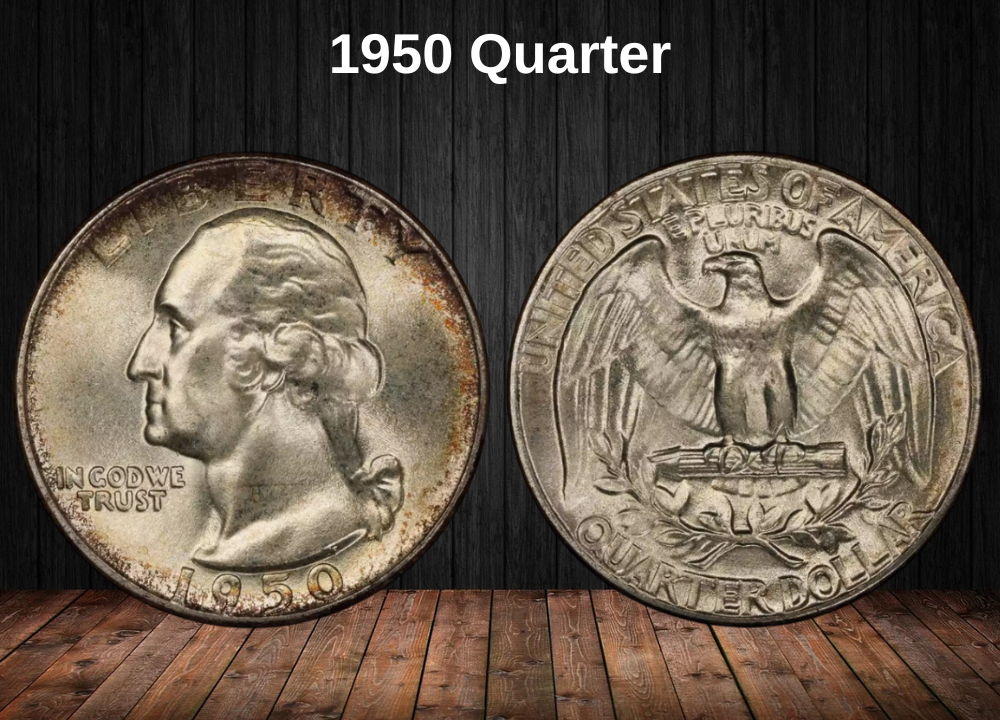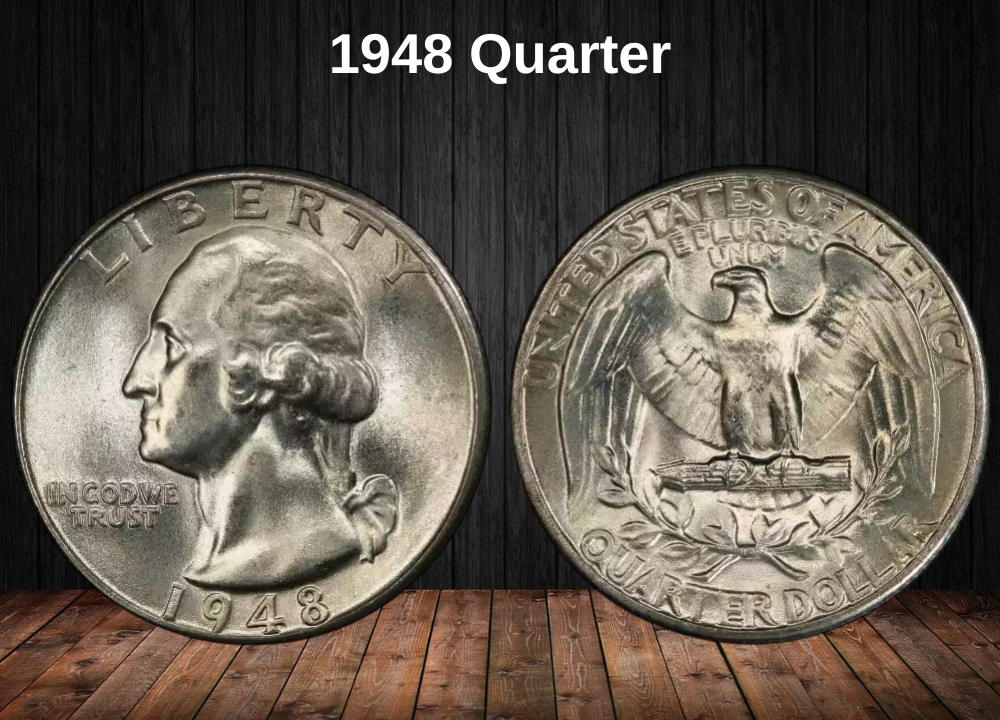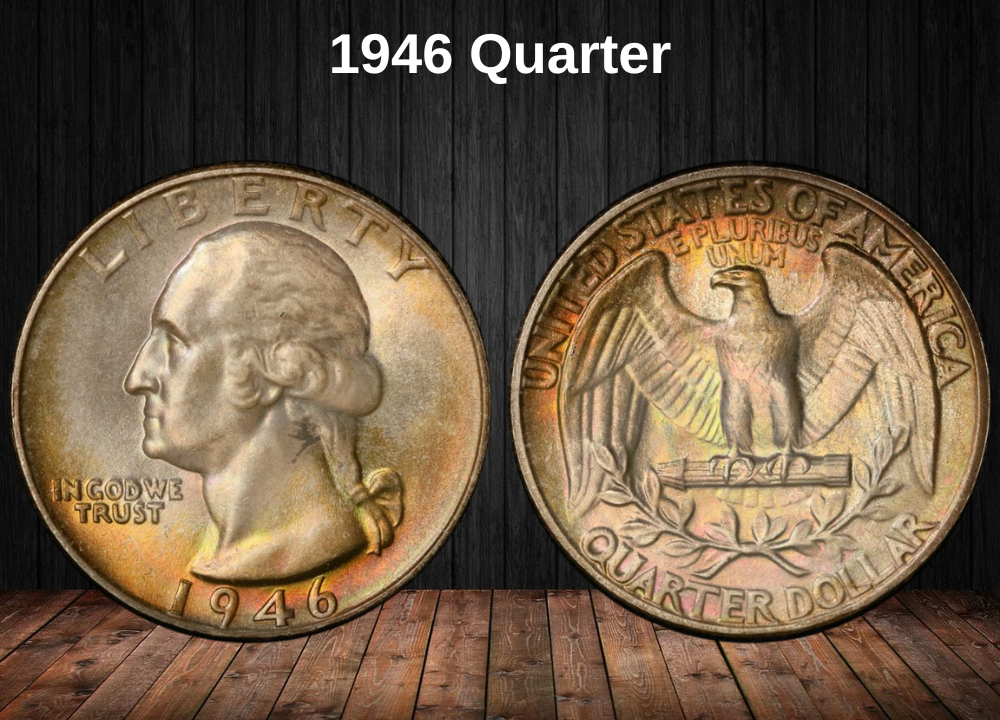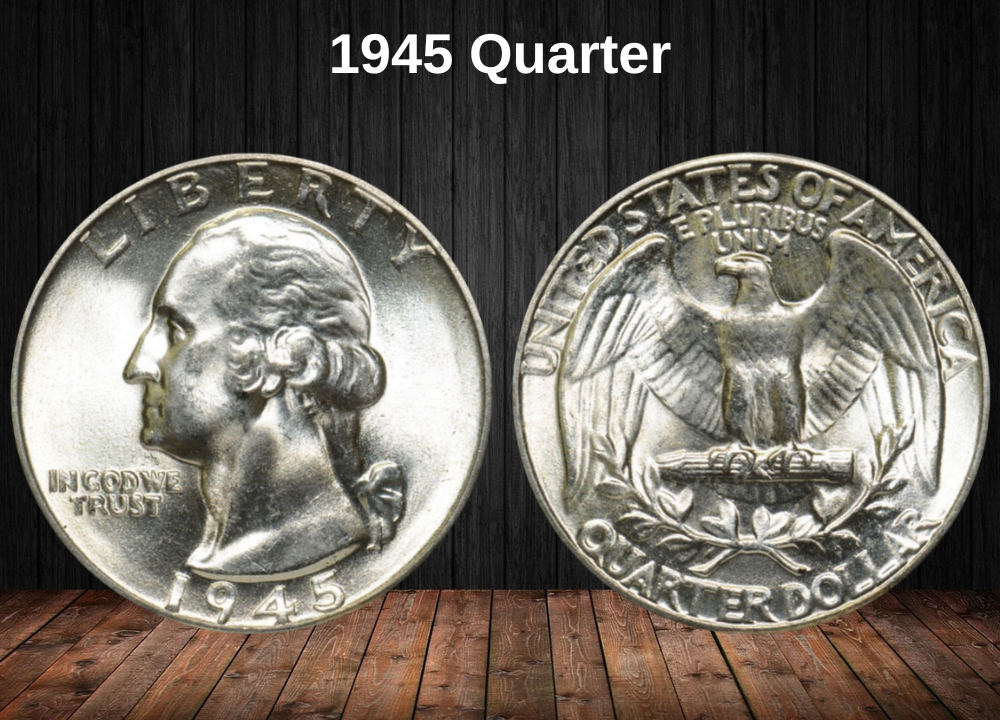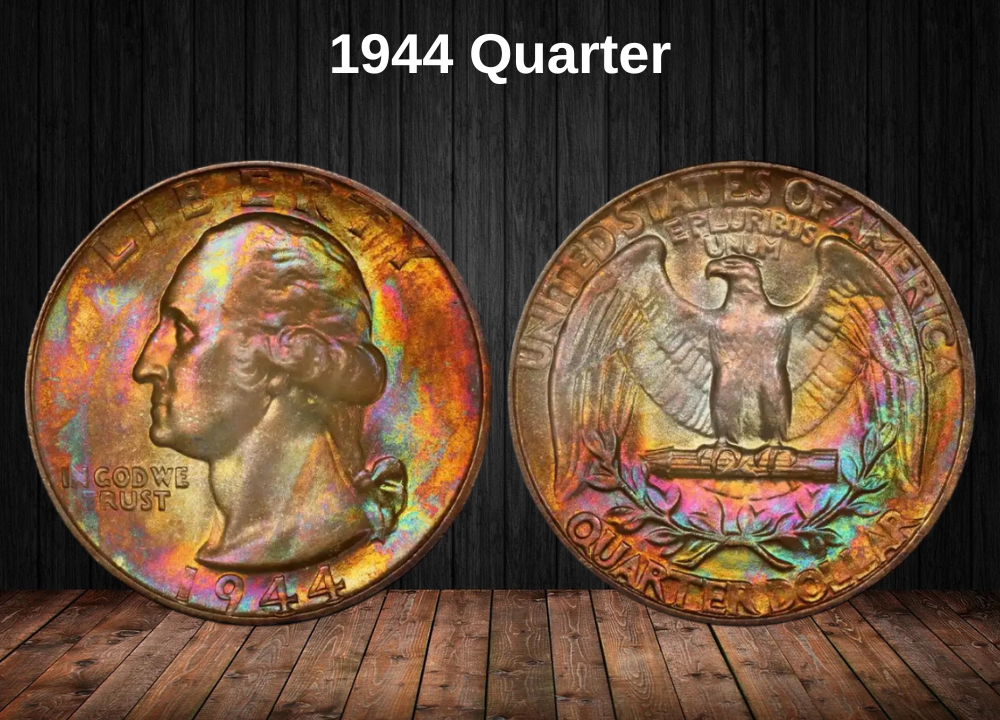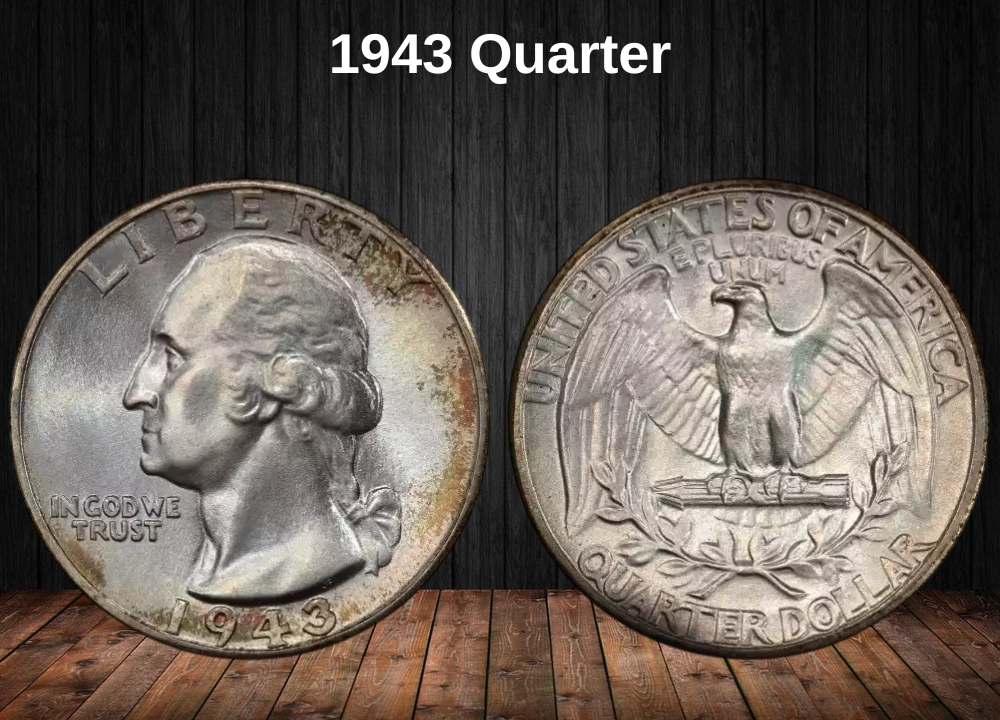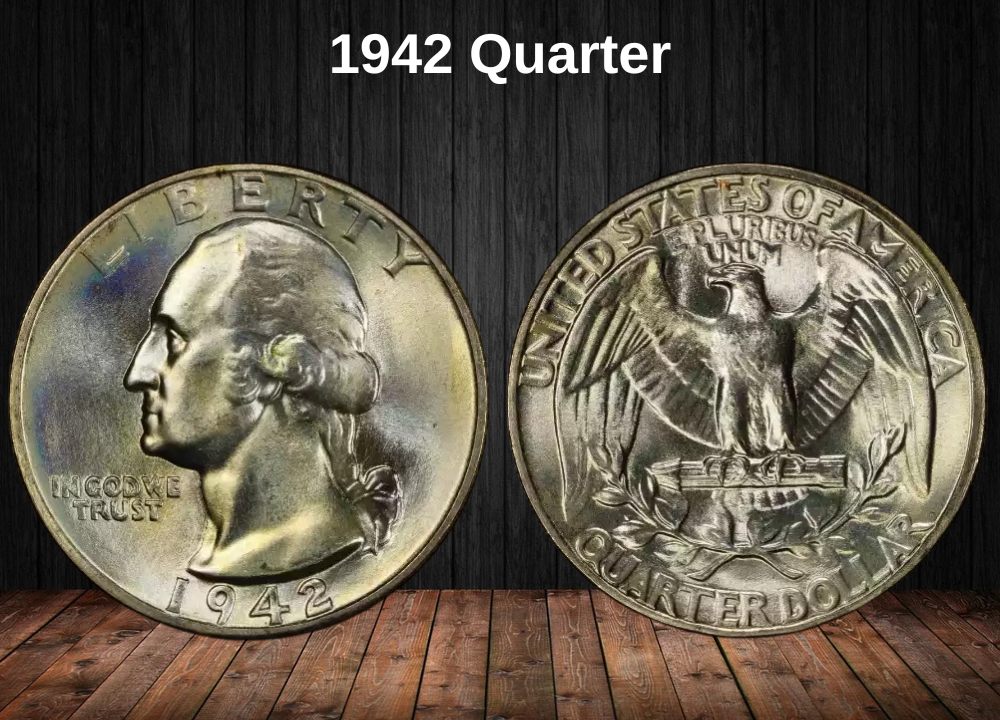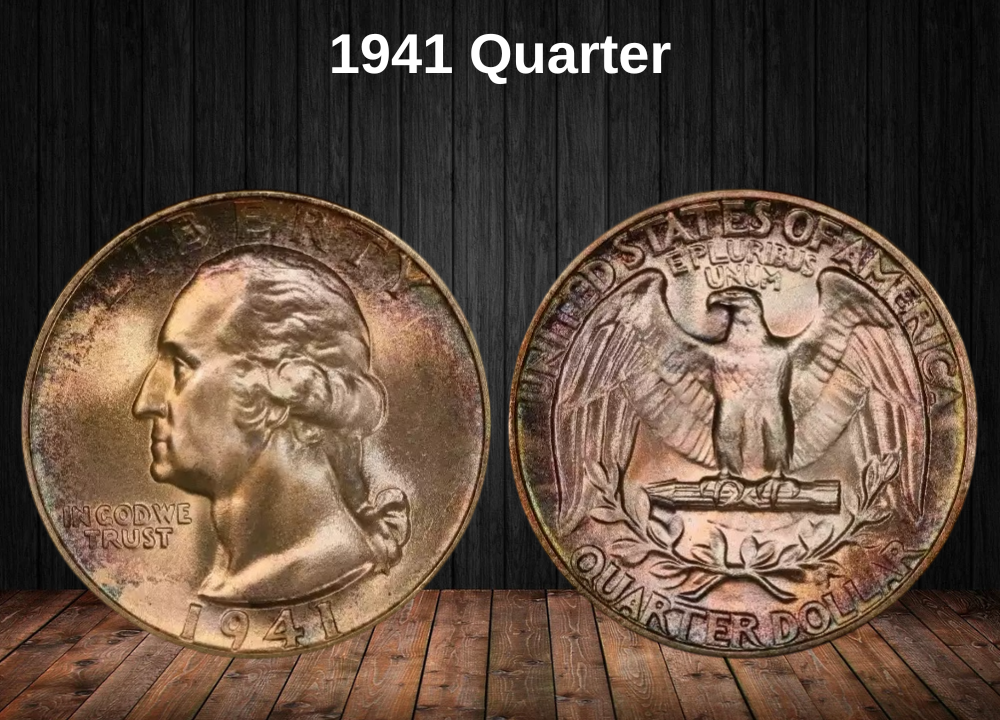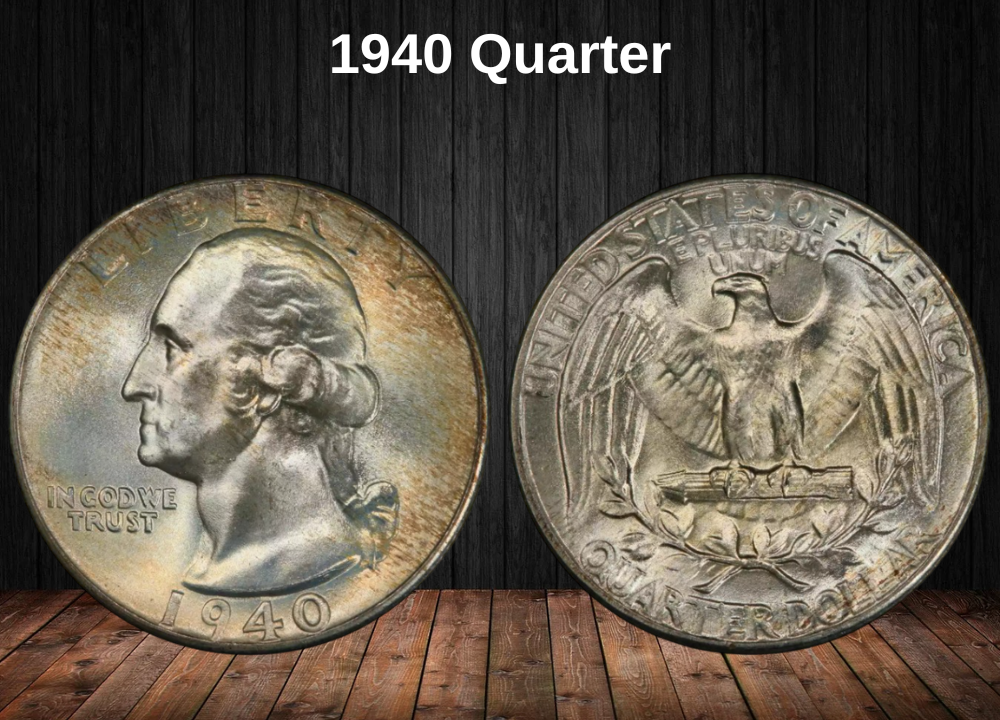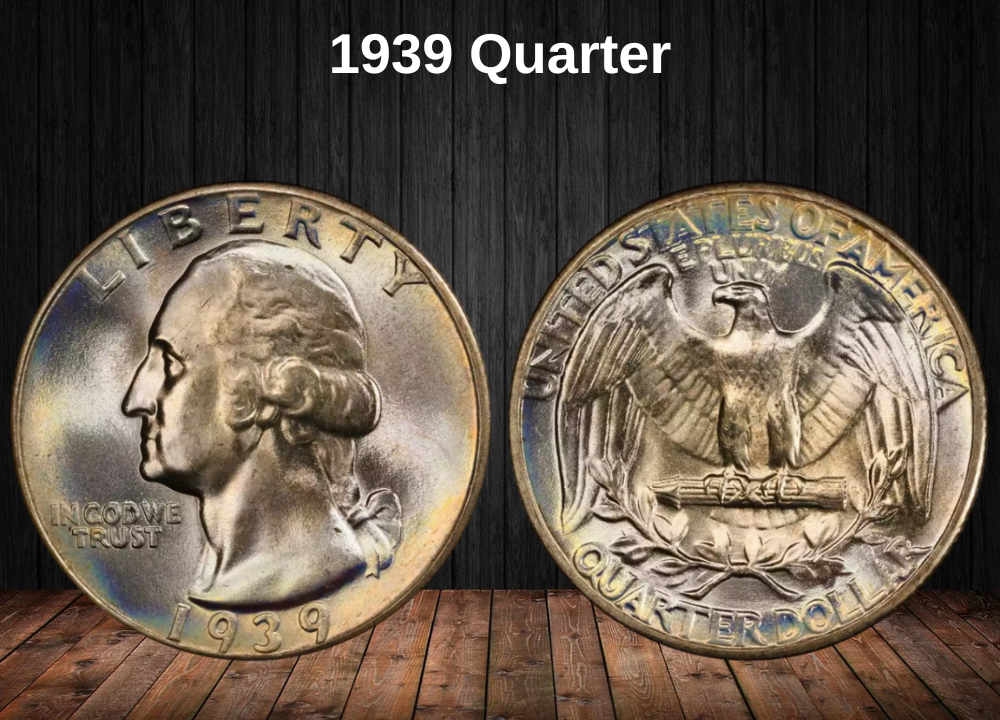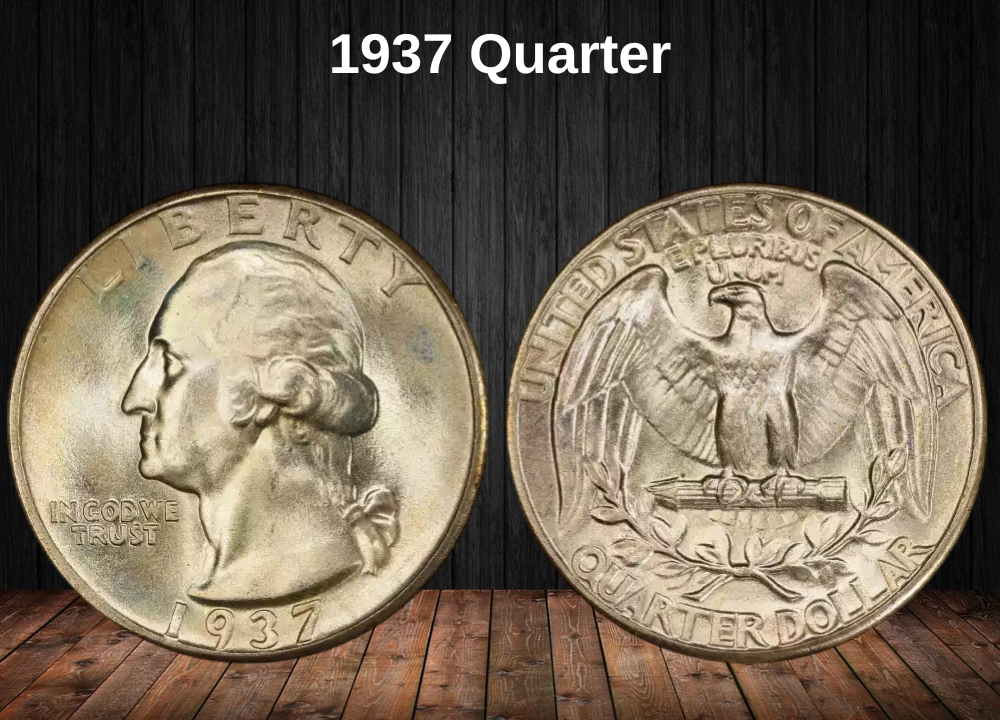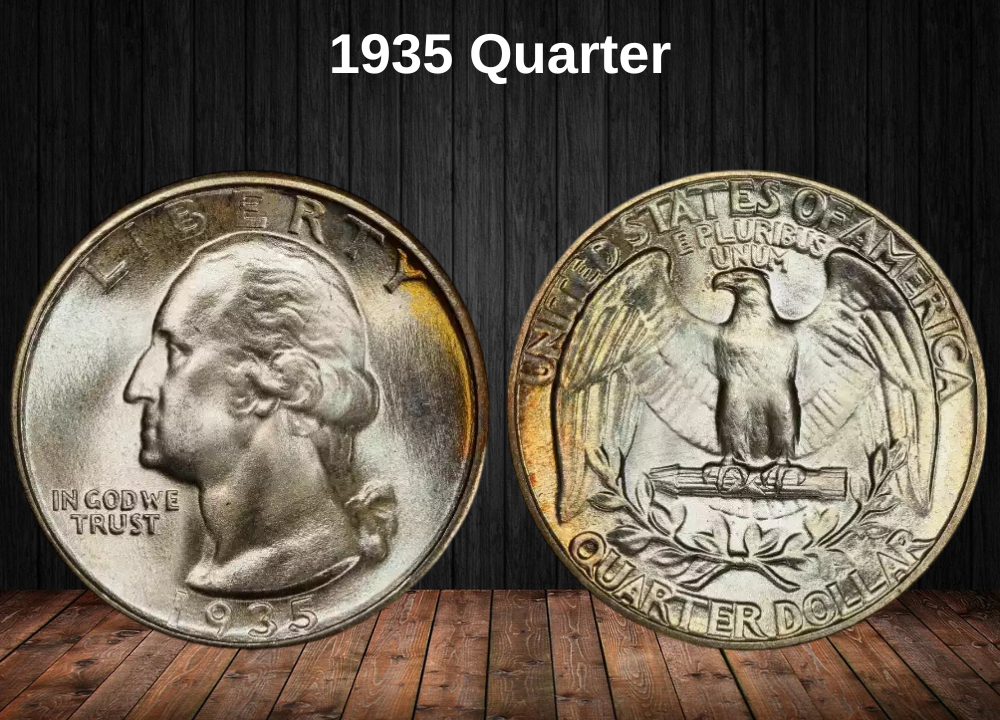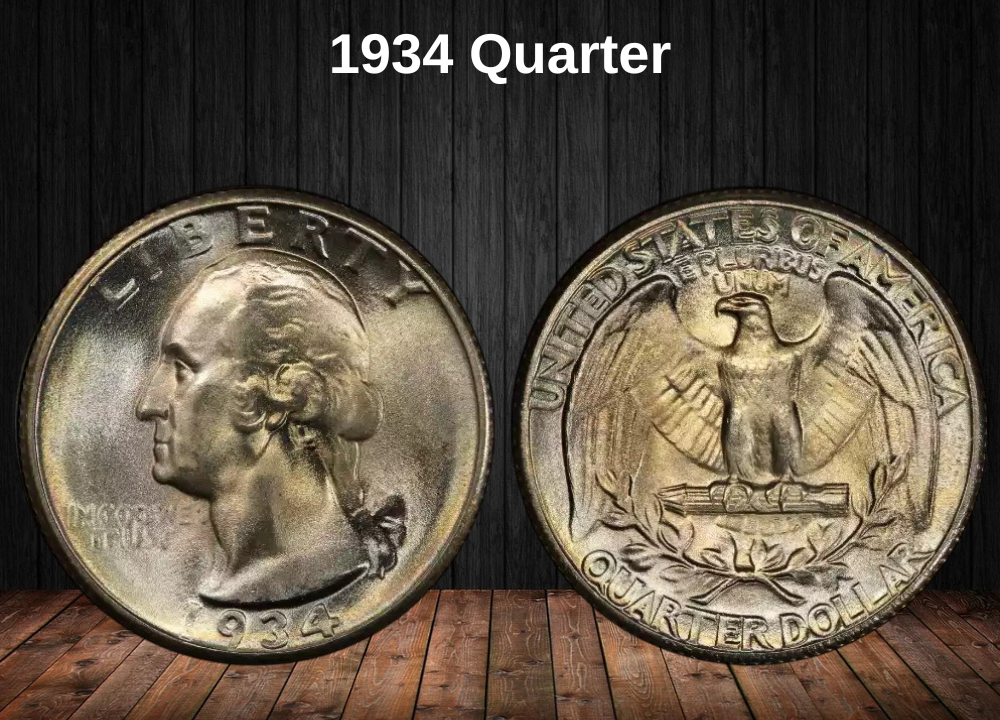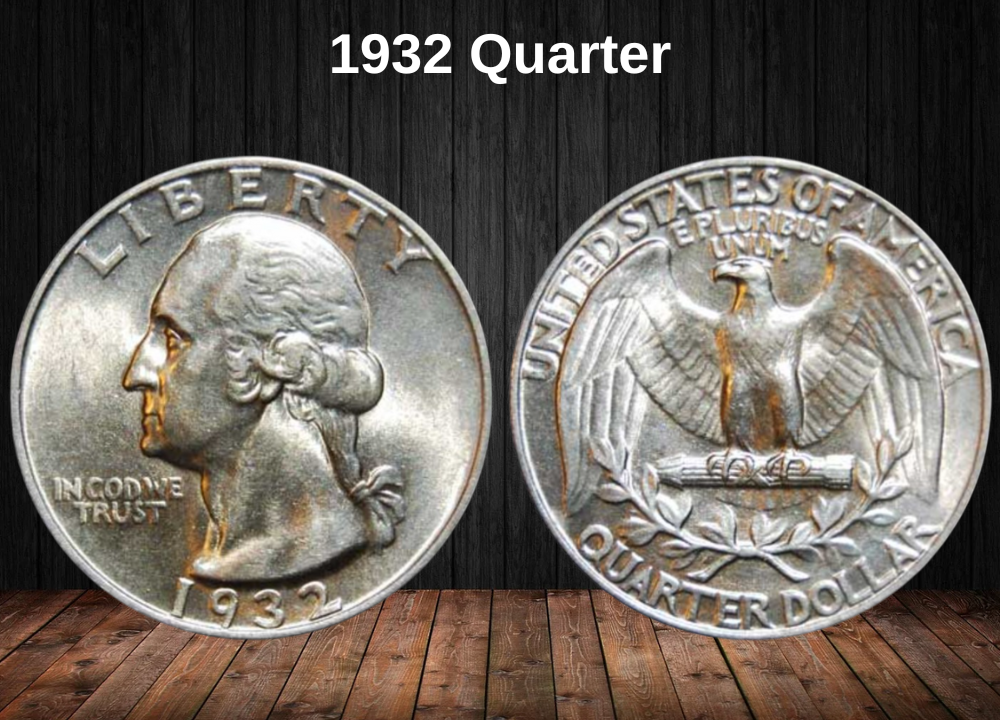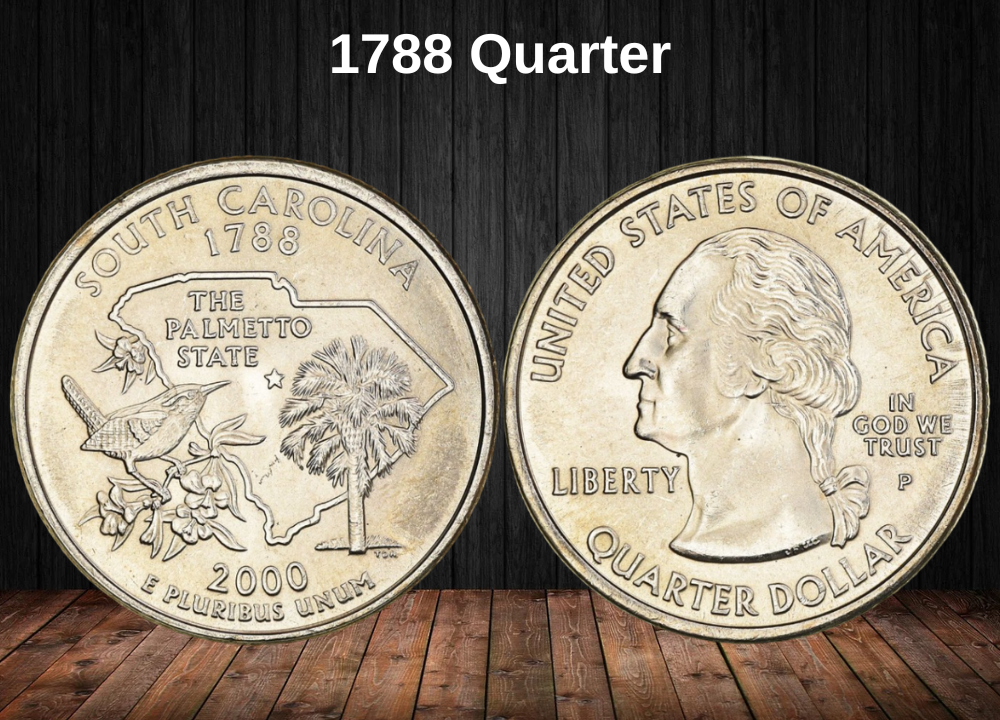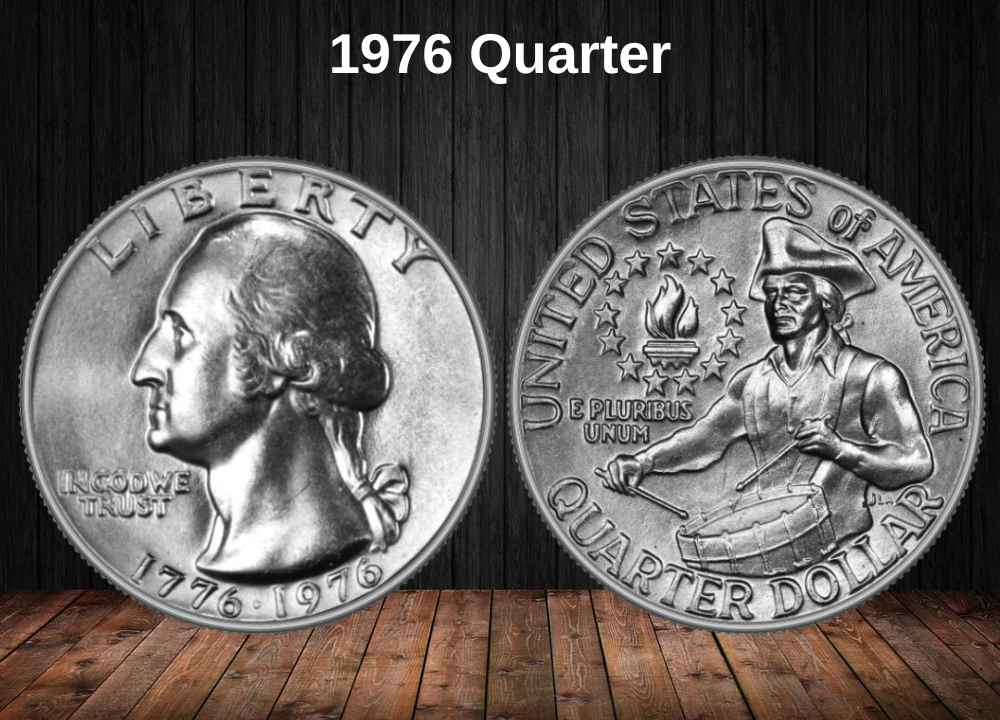The 1981 Washington Quarter is one of those coins most people overlook in their pocket change—but collectors know better.
With over 1.1 billion struck across Philadelphia and Denver, this date marked one of the highest outputs of the early clad era. Because of this, most circulated examples remain worth only face value. But here’s the catch: finding pristine survivors is remarkably tough. Unlike silver quarters that were hoarded, the 1981 issues went straight into circulation, and today only about 30–35% survive in collectible condition.
That makes high-grade Mint State (MS) coins, along with San Francisco proof issues, the real prizes. The 1981-S Type 2 Proof DCAM in particular can reach nearly $8.50, while circulation strikes in top grades command strong premiums over face value.
And for sharp-eyed collectors, errors like doubled dies and off-metal planchets can transform an ordinary 25-cent piece into a $100–$150 coin.
1981 Quarter Value By Variety
Here’s what 1981 quarters are selling for today, organized by mint and strike type.
| TYPE | GOOD | FINE | AU | MS | PR |
|---|---|---|---|---|---|
| 1981 P Quarter Value | $0.08 | $0.26 | $0.67 | $10.50 | — |
| 1981 D Quarter Value | $0.08 | $0.26 | $0.67 | $8.83 | — |
| 1981 S Type 1 DCAM Quarter Value | — | — | — | — | $7.00 |
| 1981 S Type 2 DCAM Quarter Value | — | — | — | — | $8.44 |
Top 7 Most Valuable 1981 Quarters Worth Money
| Rank | Coin Variety & Grade | Value |
|---|---|---|
| 1 | 1981-P Washington Quarter MS-67 | $1,250 |
| 2 | 1981-D Washington Quarter MS-67 | $975 |
| 3 | 1981-S Type 2 Proof DCAM PR-70 | $600 |
| 4 | 1981-S Type 1 Proof DCAM PR-70 | $475 |
| 5 | 1981-P Doubled Die Obverse (DDO) MS-65 | $350 |
| 6 | 1981-D Off-Center Strike (10–15%) MS-64 | $280 |
| 7 | 1981-S Type 2 Proof CAM PR-69 | $195 |
History of the 1981 Quarter
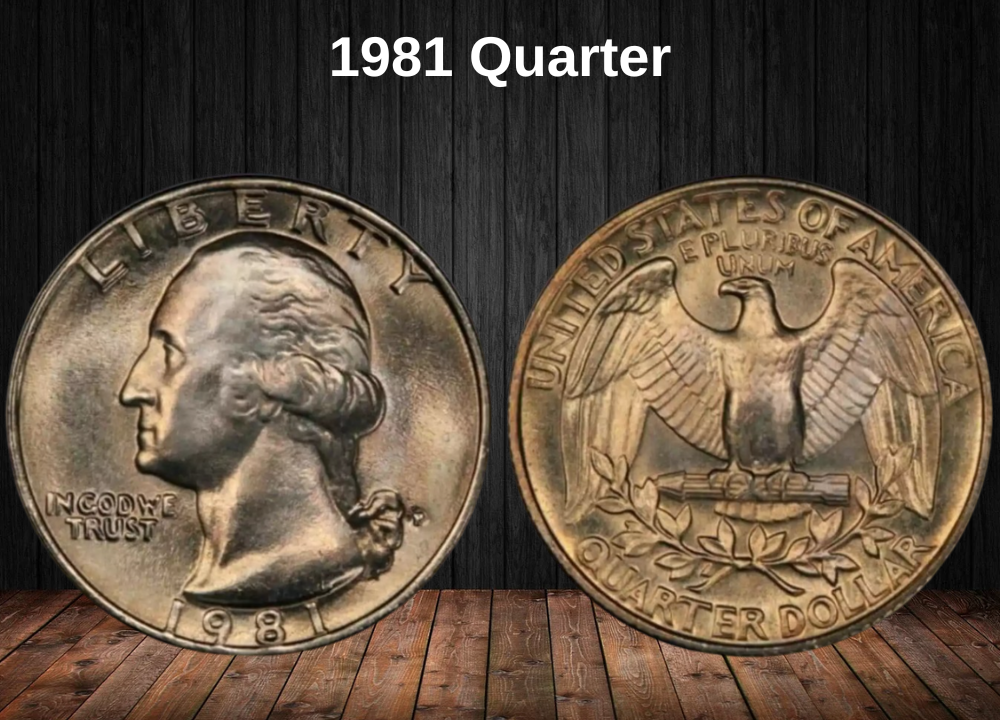
The 1981 Washington Quarter reflects the maturity of the clad era that began in 1965 when silver was permanently removed from circulating quarters. By this time, Americans had fully adjusted to the copper-nickel composition, and the once-controversial transition from silver to clad coinage was now the new normal.
Philadelphia and Denver combined to strike more than 1.1 billion quarters in 1981, ensuring an abundant supply for commerce. Unlike their silver predecessors, these coins weren’t hoarded, which means that while finding circulated pieces is easy, pristine high-grade examples are much scarcer than many collectors realize.
Another major historical note for 1981 was the San Francisco Mint’s continuation of proof coin production. These coins came in two distinct varieties—Type 1 and Type 2 proofs—distinguished by differences in the style of the mint mark. Type 2 proofs, with their sharper “S,” are more desirable and generally command higher values.
The year also coincided with growing collector interest in error coins. With huge mintages and high-speed presses, varieties like doubled dies, off-center strikes, and repunched mint marks appeared, giving sharp-eyed collectors new opportunities to find treasures in what many people considered ordinary pocket change.
Today, the 1981 quarter stands as a reminder of America’s fully modernized coinage system—common in circulation, but with hidden gems in mint state and proof varieties that remain highly collectible.
Key Features of the 1981 Quarter
The Obverse of the 1981 Quarter
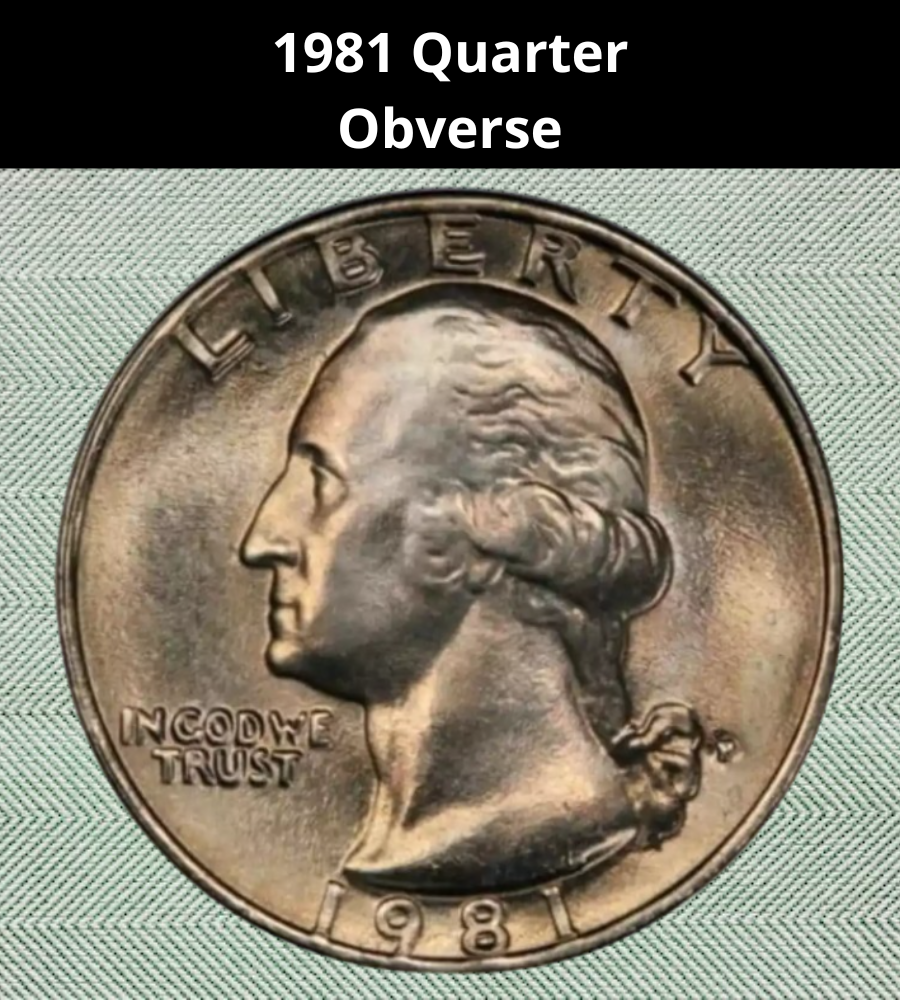
The obverse of the 1981 Washington quarter continues John Flanagan’s classic design first introduced in 1932. It features George Washington’s profile facing left, inspired by Jean-Antoine Houdon’s 1785 bust. The inscriptions include:
- LIBERTY across the top rim.
- IN GOD WE TRUST to the left of Washington’s portrait.
- The date 1981 centered along the lower rim.
- The designer’s initials JF appear at the neckline truncation.
Unlike earlier silver issues, the obverse design on clad quarters often appears slightly shallower due to the harder copper-nickel alloy.
The Reverse of the 1981 Quarter
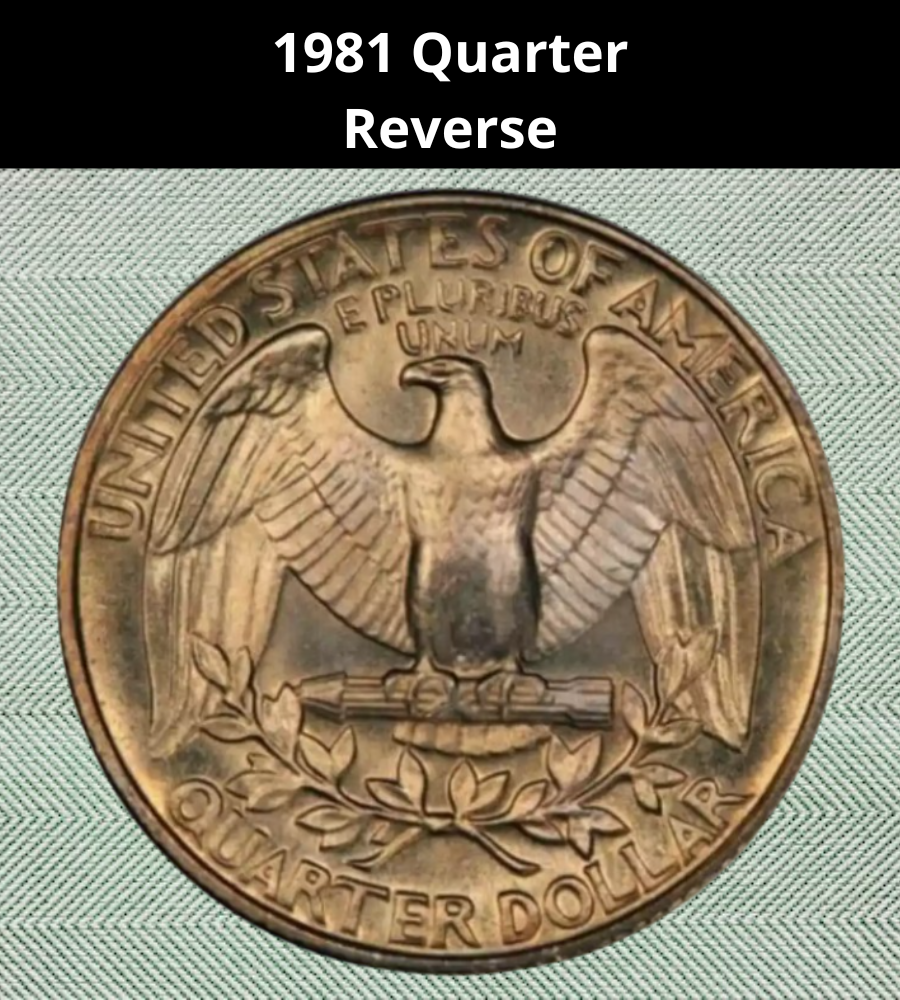
The reverse showcases a bold American bald eagle with its wings spread, clutching a bundle of arrows in its talons. Beneath the eagle is a pair of olive branches symbolizing peace. Inscriptions include:
- UNITED STATES OF AMERICA around the top rim.
- E PLURIBUS UNUM just above the eagle’s head.
- QUARTER DOLLAR curving along the bottom rim.
This heraldic design remained a staple of U.S. quarters until 1998, when the 50 State Quarters program began.
Other Features of the 1981 Quarter
The technical specifications of the 1981 quarter follow the clad composition introduced in 1965:
- Composition: 91.67% copper, 8.33% nickel (outer layers bonded to a pure copper core).
- Weight: 5.67 grams.
- Diameter: 24.3 mm.
- Thickness: 1.75 mm.
- Edge: Reeded with 119 reeds.
- Mints: Philadelphia (P), Denver (D), and San Francisco (S Proofs).
These specs remained unchanged for decades, helping cement the Washington quarter as one of the most recognizable coins in American circulation.
1981 Quarter Grading
Accurately grading a 1981 Washington quarter is the key to determining whether it’s worth just face value or significantly more. The table below outlines what to look for at each major grade level:
| Grade | Description | Value Impact |
|---|---|---|
| Good (G-4) | Heavy wear, Washington’s portrait and eagle flattened with major detail loss. Legends visible but faint. | Worth face value ($0.25). |
| Fine (F-12) | Moderate wear, but Washington’s hair and eagle’s wings show some remaining detail. Legends are clear. | Slight premium over face value. |
| About Uncirculated (AU-50) | Light wear confined to high points such as Washington’s cheek and the eagle’s breast. Most mint luster still present. | Typically $0.67 or slightly higher. |
| Mint State (MS-60) | No wear, but noticeable contact marks or dull luster. Fully uncirculated. | $2 – $3. |
| Mint State (MS-65) | Strong luster, sharp strike, and only a few minor marks. Eye appeal is strong. | $8 – $15 depending on mint. |
| Gem Mint State (MS-67) | Nearly perfect with blazing luster, razor-sharp strike, and virtually no marks. Very rare. | $700+ for top-pop Philadelphia or Denver issues. |
| Proof (PR-65 to PR-70) | Struck at San Francisco with mirror fields. Type 1 has a blob-style “S”; Type 2 has a sharp, clear “S.” Cameo and DCAM designations bring significant premiums. | $7 – $8.50, with PR-70 DCAM examples exceeding $100+. |
1981 Quarter Value Guides
1981-P Quarter Value
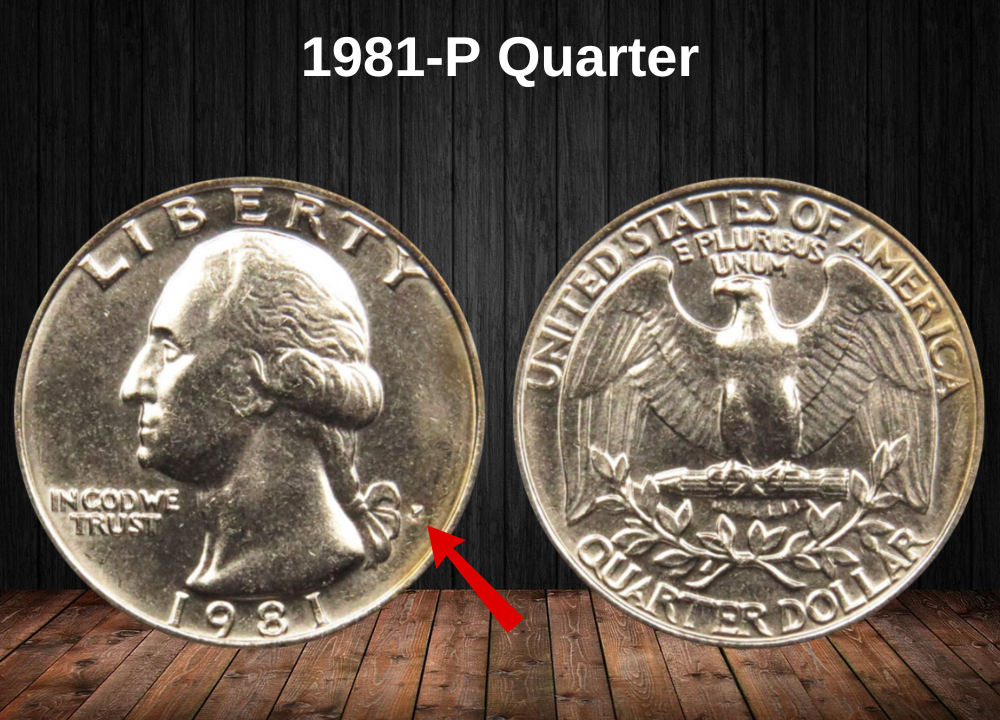
The 1981-P Washington quarter was struck at the Philadelphia Mint, with a mintage of over 601 million coins. While this huge production run makes them very common in circulation, high-quality mint state examples are far scarcer and command strong premiums.
Unlike earlier quarters, the 1981-P carries the “P” mint mark on the obverse, marking one of the early years when Philadelphia began using its identifying letter consistently. These coins saw heavy everyday use, meaning that finding one in pristine condition today can be surprisingly challenging.
Most circulated 1981-P quarters remain worth just $0.25–$0.67, but their value jumps in uncirculated conditions:
1981-P Quarter Value Chart
| Grade | Value Range |
|---|---|
| Good (G-4) | $0.08 – $0.25 |
| Fine (F-12) | $0.26 – $0.50 |
| About Uncirculated (AU-50) | $0.67 – $1.00 |
| Mint State (MS-60) | $2.00 – $3.50 |
| Mint State (MS-63) | $4.00 – $6.50 |
| Mint State (MS-65) | $10.50 – $18.00 |
| Mint State (MS-67) | $350 – $700+ |
1981-D Quarter Value
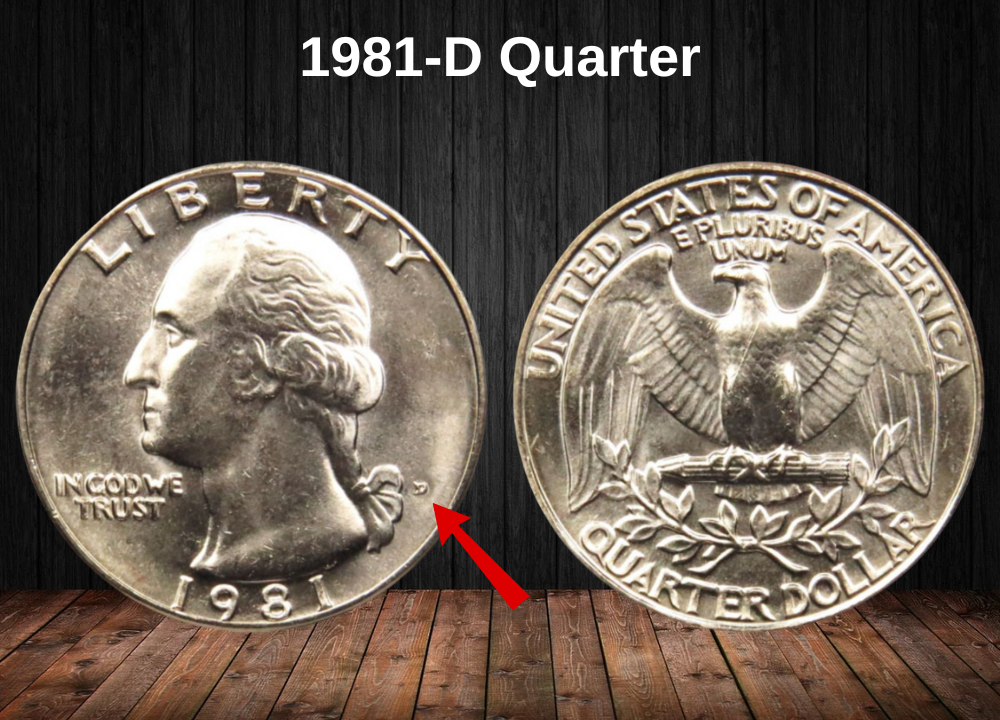
The 1981-D Washington quarter was struck at the Denver Mint, with a massive mintage of over 749 million coins, making it one of the most abundant clad quarters of the early 1980s. Like its Philadelphia counterpart, most examples circulated heavily, and today they are still commonly found in pocket change.
Despite their availability, collectors focus on high-grade Mint State (MS) coins, since circulation wear and weak strikes were common in this issue. Well-struck examples with sharp details in Washington’s hair and the eagle’s feathers are particularly desirable.
Most circulated 1981-D quarters trade for just face value ($0.25), but higher-grade specimens bring substantial premiums:
1981-D Quarter Value Chart
| Grade | Value Range |
|---|---|
| Good (G-4) | $0.08 – $0.25 |
| Fine (F-12) | $0.26 – $0.50 |
| About Uncirculated (AU-50) | $0.67 – $1.00 |
| Mint State (MS-60) | $2.00 – $3.00 |
| Mint State (MS-63) | $3.50 – $5.50 |
| Mint State (MS-65) | $8.83 – $15.00 |
| Mint State (MS-67) | $275 – $500+ |
1981-S Type 1 DCAM Quarter Value
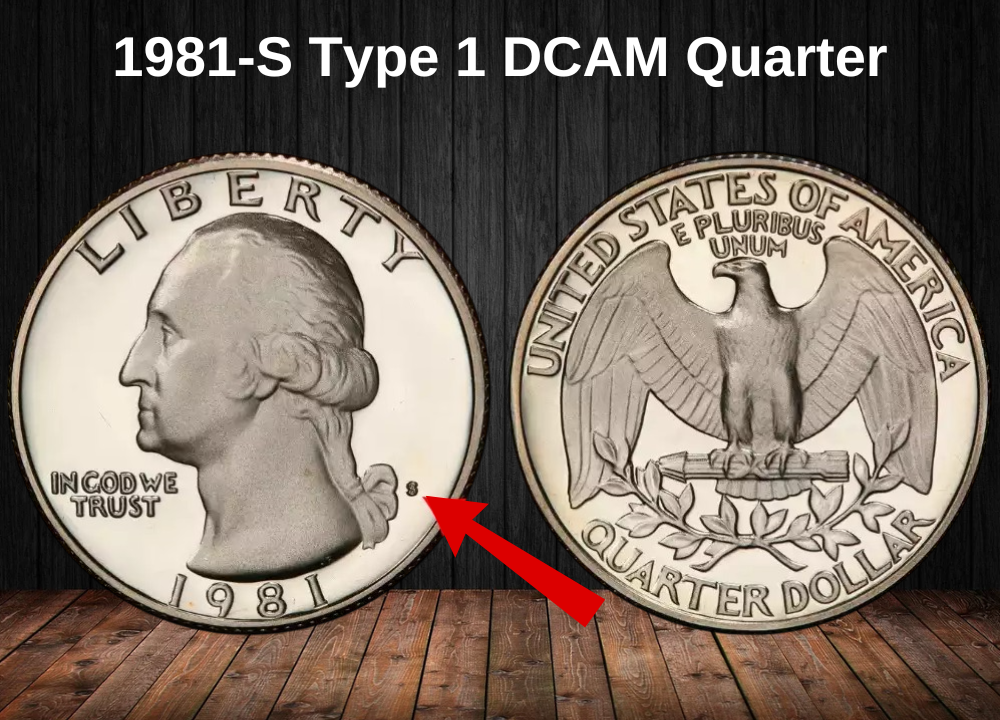
The 1981-S Type 1 Washington quarter was struck at the San Francisco Mint as part of the proof sets. These coins were never intended for circulation and were carefully struck on polished planchets using specially prepared dies, giving them deep mirrored fields and frosted design elements.
The Type 1 designation refers to the “filled S” mint mark, where the mint mark appears thicker and less defined than the later Type 2. This distinction makes Type 1 a collector favorite, particularly when graded in Deep Cameo (DCAM) condition.
Although proof coins typically exist in large numbers, DCAM-designated examples remain popular because of their dramatic black-and-white contrast, giving the coin a stunning visual appeal.
1981-S Type 1 DCAM Quarter Value Chart
| Grade | Value Range |
|---|---|
| PR-64 | $3 – $4 |
| PR-65 | $4 – $5 |
| PR-66 | $5 – $6 |
| PR-67 | $6 – $7 |
| PR-68 | $6.50 – $7.50 |
| PR-69 | $7.00 – $8.00 |
| PR-70 | $10 – $15+ |
1981-S Type 2 DCAM Quarter Value
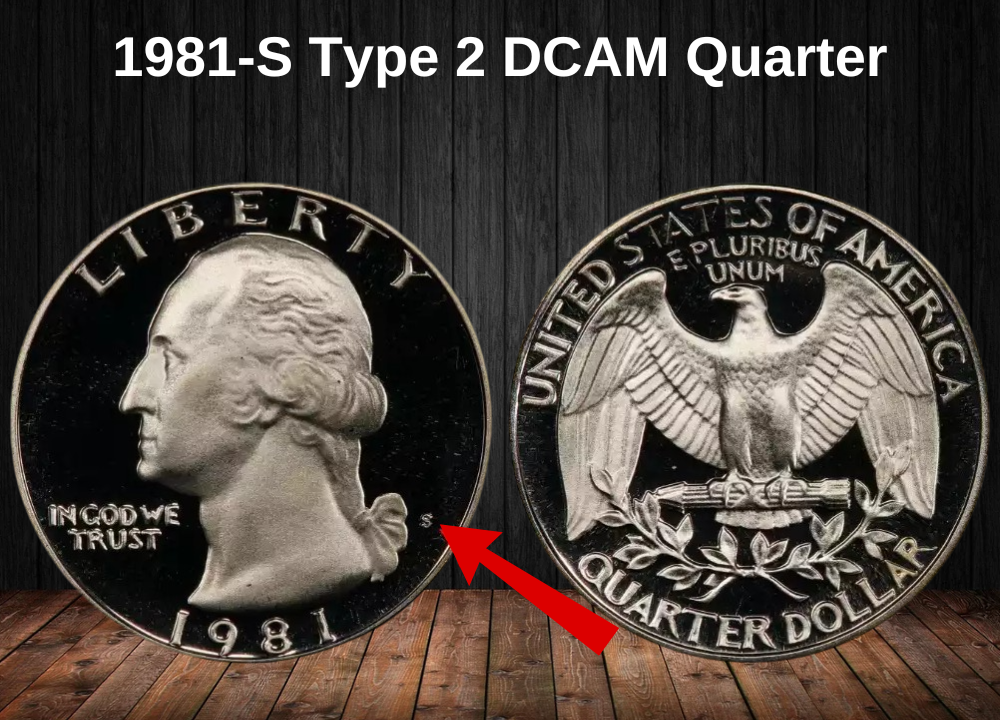
The 1981-S Type 2 Washington quarter represents the scarcer proof variety of this year. Unlike Type 1, which has the “filled S” mint mark, Type 2 features a “clear S” mint mark with sharper definition and open loops. This detail, while subtle, dramatically impacts collectability and value.
These coins were struck at the San Francisco Mint as part of the proof sets, with specially polished dies and planchets to achieve deep mirrored fields and frosted devices. The Deep Cameo (DCAM) designation highlights the bold black-and-white contrast that makes these proofs stand out as some of the finest examples of U.S. Mint craftsmanship in the early clad era.
Because fewer proof sets contained the Type 2 variety, these coins are more challenging to find, especially in perfect grades. Collectors prize them for both their scarcity and aesthetic beauty.
1981-S Type 2 DCAM Quarter Value Chart
| Grade | Value Range |
|---|---|
| PR-64 | $4 – $5 |
| PR-65 | $5 – $6 |
| PR-66 | $6 – $7 |
| PR-67 | $7 – $8 |
| PR-68 | $7.50 – $8.50 |
| PR-69 | $8 – $9 |
| PR-70 | $18 – $25+ |
Rare 1981 Quarter Error List
While most 1981 Washington quarters are common, certain minting errors and varieties dramatically increase their collector value. Below are the most notable errors from this year, each explained in detail with updated price ranges.
1. 1981-P Doubled Die Obverse (DDO)
The 1981-P DDO is one of the most dramatic errors of the year. It features strong doubling on the obverse inscriptions, particularly visible on LIBERTY, IN GOD WE TRUST, and the date. Washington’s profile can also show slight doubling in the hair and jawline.
This error occurred when the working die received multiple hub impressions out of alignment. Collectors value sharp, uncirculated examples highly.
Value Chart – 1981-P DDO
| Grade | Value Range |
|---|---|
| VF-20 | $25 – $40 |
| EF-40 | $50 – $75 |
| AU-50 | $90 – $140 |
| MS-60 | $175 – $250 |
| MS-63 | $300 – $450 |
| MS-65 | $600 – $950 |
| MS-66 | $1,500+ |
2. 1981-D Doubled Die Reverse (DDR)
The 1981-D DDR shows noticeable doubling on the reverse lettering, especially UNITED STATES OF AMERICA, E PLURIBUS UNUM, and QUARTER DOLLAR. Under magnification, the spread appears like a shadow effect around the letters.
These are scarcer than obverse doubled dies, making them an exciting find for variety hunters.
Value Chart – 1981-D DDR
| Grade | Value Range |
|---|---|
| VF-20 | $20 – $35 |
| EF-40 | $40 – $65 |
| AU-50 | $75 – $120 |
| MS-60 | $150 – $225 |
| MS-63 | $300 – $400 |
| MS-65 | $700 – $1,000 |
| MS-66 | $1,600+ |
3. 1981-D Repunched Mint Mark (RPM)
During the early 1980s, mint marks were still hand-punched onto working dies. The 1981-D RPM shows a secondary “D” mint mark, often positioned slightly north or southeast of the primary mark. These require magnification but are highly collectible as evidence of pre-digital minting.
Value Chart – 1981-D RPM
| Grade | Value Range |
|---|---|
| VF-20 | $15 – $25 |
| EF-40 | $30 – $50 |
| AU-50 | $55 – $85 |
| MS-60 | $100 – $150 |
| MS-63 | $180 – $250 |
| MS-65 | $350 – $500 |
| MS-66 | $750+ |
4. 1981 Off-Center Strike Quarter
An off-center strike happens when the coin blank is misaligned with the dies during striking, leaving part of the design missing and blank planchet exposed.
The degree of the off-center determines its value: the more dramatic (especially 40–70%), the higher the premium, especially if the date is still visible.
Value Chart – 1981 Off-Center Quarter
| Strike Percentage | Value Range |
|---|---|
| 5% – 10% Off-Center | $20 – $40 |
| 15% – 30% Off-Center | $50 – $120 |
| 40% – 60% Off-Center | $150 – $300 |
| 70%+ With Full Date | $400 – $600+ |
5. 1981 Clipped Planchet Quarter
Clipped planchets occur when the blanking press overlaps during cutting, removing a curved section of the coin. 1981 quarters with this error show a crescent-shaped clip, often alongside a “blunted” edge of the rim.
Collectors pay more for well-defined clips that don’t affect the visibility of the date.
Value Chart – 1981 Clipped Planchet
| Grade | Value Range |
|---|---|
| VF–EF | $20 – $40 |
| AU | $50 – $75 |
| MS | $90 – $150+ |
6. 1981 Broadstrike Quarter
A broadstrike occurs when a quarter is struck without the collar die, causing the coin to spread out and appear wider than normal. The design details remain but look “stretched.”
This error is eye-catching and typically valued by collectors who enjoy unusual minting results.
Value Chart – 1981 Broadstrike Quarter
| Grade | Value Range |
|---|---|
| VF–EF | $15 – $30 |
| AU | $35 – $60 |
| MS | $75 – $120+ |
7. 1981 Double-Struck Quarter
Double-struck errors occur when a coin is struck more than once without being ejected properly. In 1981 quarters, this can result in overlapping dates, letters, or partial re-strikes. Dramatic examples are highly desirable.
Value Chart – 1981 Double-Struck Quarter
| Grade | Value Range |
|---|---|
| Minor Double-Strike | $50 – $100 |
| Moderate Double-Strike | $150 – $300 |
| Major Visible Double-Strike | $400 – $700+ |
Where to Sell Your Quarter Coin?
Now that you know the value of your quarter, the next step is deciding where to sell it. There are several trusted options—both online and in person—that can help you get the best price depending on your coin’s rarity and condition.
To see the full list of recommended places, along with their advantages and disadvantages, check our complete guide on where to sell your quarter coins.
FAQ About The 1981 Quarter
1) Why is 1981 a key year for Proof collectors?
Because the San Francisco Proofs exist in two mintmark styles:
- Type 1 (Filled S): Blurry, “blob-like” mintmark.
- Type 2 (Clear S): Crisp, sharply cut, scarcer and more valuable.
Type 2 Deep Cameos in PR-69 are the ultimate chase.
2) How rare are top-grade business strikes from 1981?
Despite huge mintages (Philadelphia 601M, Denver 575M, San Francisco Proofs 4.06M), business strikes in MS-67+ are scarce. Most coins show weak hair curls, flat eagle breasts, and heavy bag marks. Fully struck, mark-free survivors are true condition rarities.
3) What errors and varieties matter most in 1981 quarters?
- 1981-D RPMs (Repunched Mintmarks): Collectible in gem grades.
- Minor DDO/DDR varieties: Subtle, but worth cherrypicking.
- Wrong planchet errors: Quarters struck on dime or cent stock fetch strong premiums.
- Clad layer errors: Missing clad layer coins are dramatic and valuable.
4) What separates a Proof Deep Cameo from an average 1981-S Proof?
- Early die state: Thick frost on devices + inky black mirrors.
- Die wear/polish: Later states lose contrast.
- Surface quality: Hairlines or haze immediately slash value.
PR-69 DCAM examples are scarce and registry-worthy.
5) How do graders balance strike vs. surface quality in 1981 quarters?
- Strike weakness: Hair above the ear and eagle’s breast often soft.
- Surface quality: Bag marks on Washington’s cheek or obverse fields are heavily penalized.
Only coins with both full strike and pristine fields make MS-67 or higher.
6) Why do 1981-S Proof Type 2 coins carry such strong premiums?
They were struck in smaller numbers late in the production run, making them scarcer. In Deep Cameo, they combine rarity, eye appeal, and registry demand — a triple premium driver.
7) What are the long-term investment plays for 1981 quarters?
- MS-67+ Philadelphia & Denver circulation strikes (registry scarcity)
- 1981-D bold RPMs
- 1981-S Type 2 Proofs in PR-69 DCAM
Together, these represent condition and variety rarities that will remain in demand.

